BIANCO ROXANA
VAKIL MOZAFARI MASTER IN ARCHITECTURE ACADEMIE VAN BOUWKUNST AMSTERDAM
AHK 23 | 08 | 2022
COMMITTEE MEMBERS: BART BULTER (M) IRA KOERS HERMAN ZONDERLAND EXTERNAL COMMITTEE MEMBERS: JEROEN VAN MECHELEN DARIA NAUGOLNOVA
“The sculpture is already complete within the marble block, before I start my work. It is already there, I just have to chisel away the superfluous material.”
- Michelangelo Buonarroti
TABLE OF CONTENTS
LEGENDA: 6 - 9 LOCATION: 10 - 21 INTRODUCTION: 22 - 41 CONCEPT: 42 - 49 MASTERPLAN 50 - 63 & THEMES: DESIGN: 64 - 143 CAVE: 66 - 81 - CARRARA: 82 - 99 - AVENZA: 100 - 115 - MARINA: 116 - 129 - MARE 130 - 143 MODELS: 144 - 155 OLD DRAWINGS: 156 - 163 BIBLIOGRAPHY: 164
LEGENDA
APUANE:
The Apuan (Alps) are a mountain range in northern Tuscany, Italy. They are included between the valleys of the Serchio and Magra rivers, with a total length of approximately 55 kilometres. The highest peak is Pisanino Mountain 1947m.
BANCATA:
Marble bank. Horizontal surface cut on the cliff.
BOVARO:
Worker who used to transport the marble block through “lizzatura” by guiding the oxen (cows).
CAVA:
Quarry. An area that is dug out from a piece of land or mountainside in order to extract stone, slate, or minerals.
CAVATORE:
Quarryman. A worker in a quarry. Even the owner of the quarry is frequently call C. instead of capocava.
CARRIONE:
The Carrione is a short stream, approximately twenty kilometers long, fed by a small basin of about 52 km², which originates from the Apuan Alps.
FORMELLA:
Wedged-shape wood or metal block used to crack open the marble.
IDROVORA:
Pumping stations, also called pumphouses, facilities containing pumps and equipment for pumping fluids from one place to another.
LARDO: Lardo di Colonnata is a cured meat with a protected geographical indication (IGP), typical of the homonymous village in the Apuan Alps, in the municipality of Carrara. It is produced with pork lard, seasoned in Carrara marble basins.
8
LIZZATURA:
“lizzatura”. Transport system for heavy loads that are secured to a sled and made to slide along inclined planes.
MARMIFERA:
“Ferrovia Marmifera Privata di Carrara”, lit. ‘private marble railway of Carrara’, was an Italian industrial railway used for the transport of Carrara marble from the quarries of the municipal territory of Carrara, Tuscany. The route extended from the hillside village of Colonnata to the port of Marina di Carrara.
MAZZOLO:
Stonemason’s tool. similar to a hammer.
RAVANETO:
Accumulation of marble debris from quarrying operations.
SEGHERIA:
Sawmill. A factory in which blocks sare sawn into slabs or smaller blocks by machine.
SCALPELLO: Chisel.
TECCHIA: Vertical cut surface of the cliff.
TECCHIAIOLO:
quarryman whose task is to climb on the cliff, monitor, test the resistance of the wall by hearing the sound of the stone generated by ticking their tools on it. He eliminates unsafe masses, which could cause injuries to the other workers on the “bancata”. This is the most dangerous job on the quarry sites.
VARATA: In mining art, a method of removing large quantities of rocks by exploding gunpowder.
9
LOCATION

12
photo by Luca Locatelli
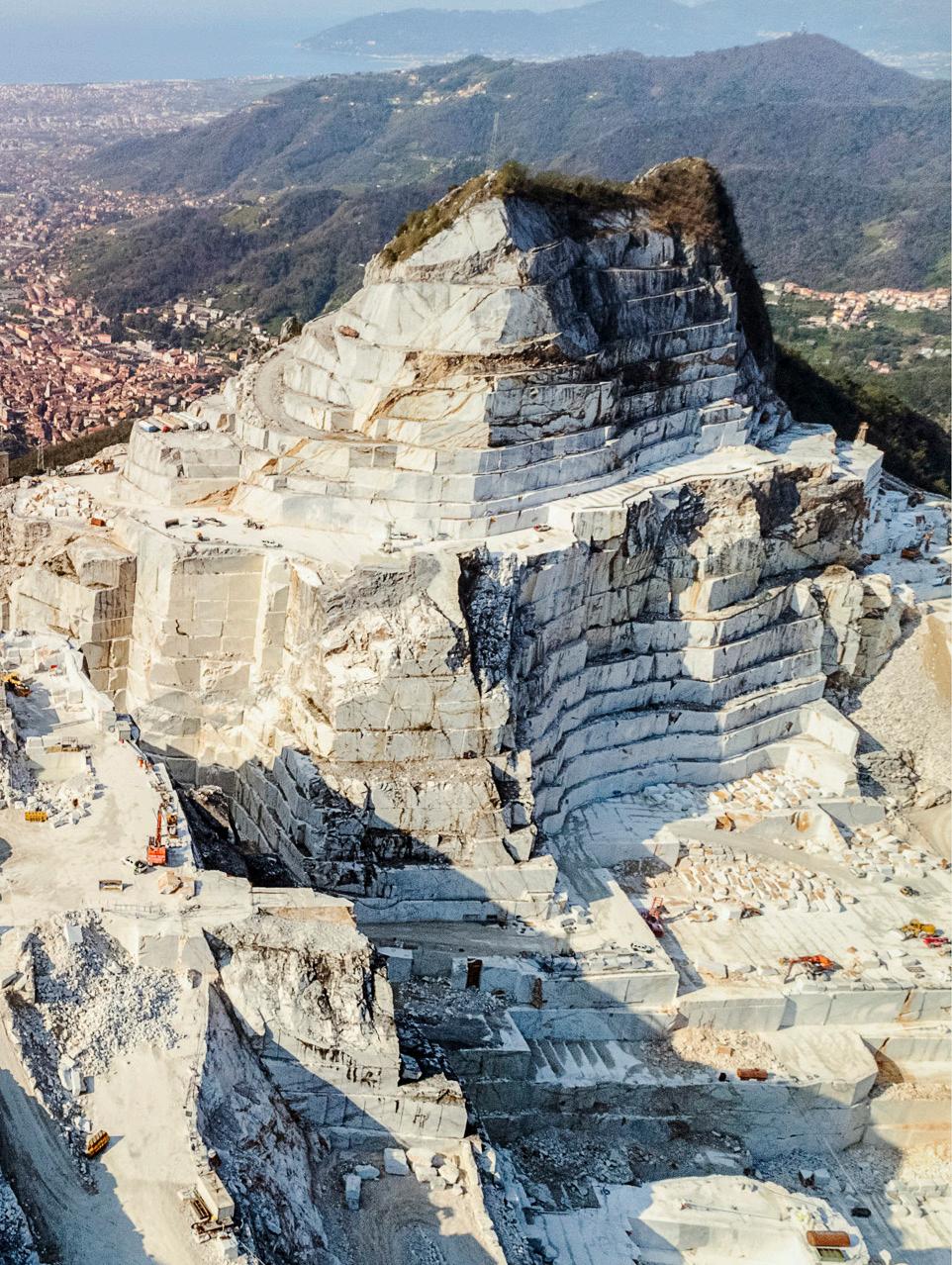
13
photo by Luca Locatelli

14

15

16
photo by Luca Locatelli

17
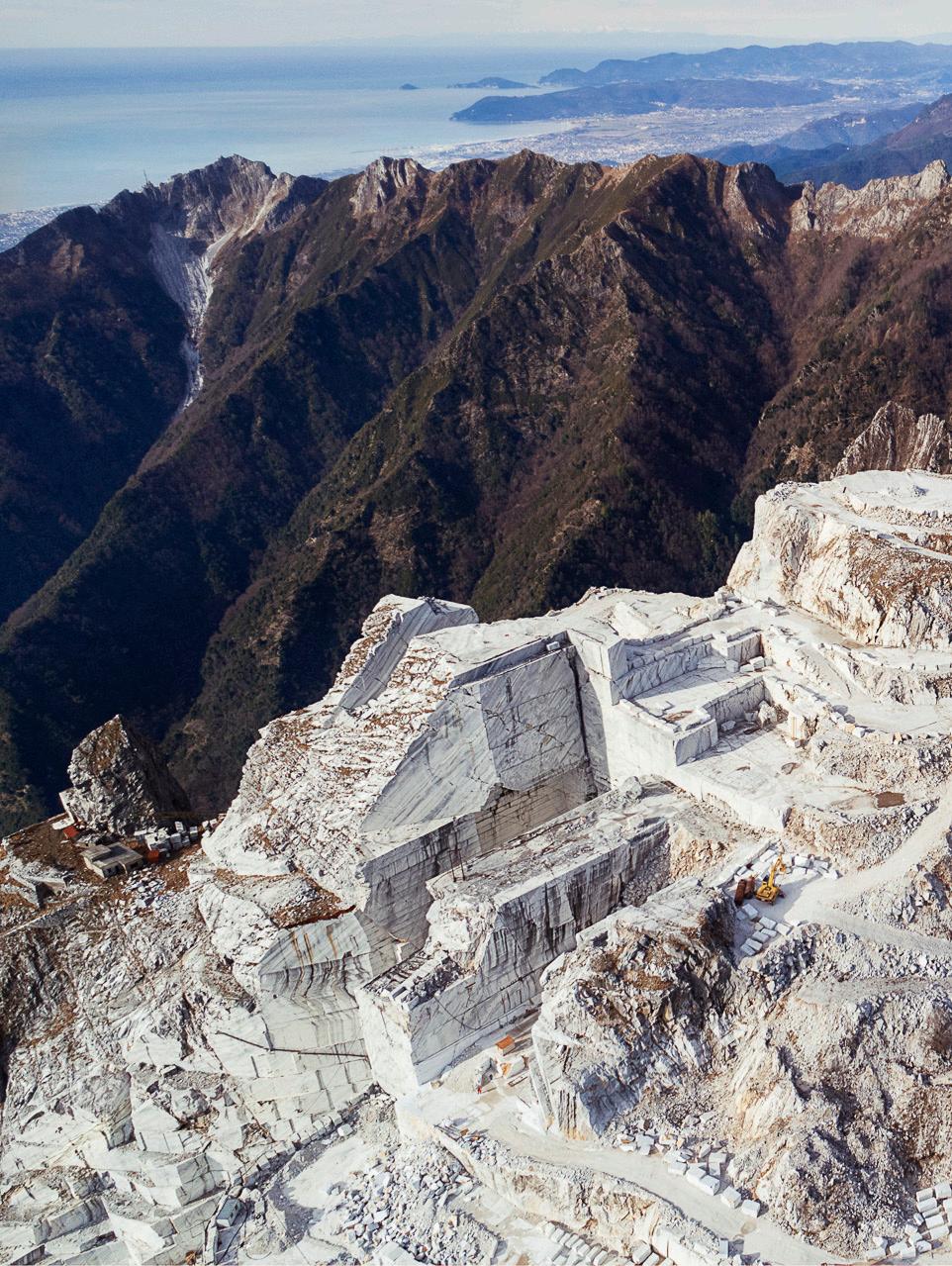
18
photo by Luca Locatelli
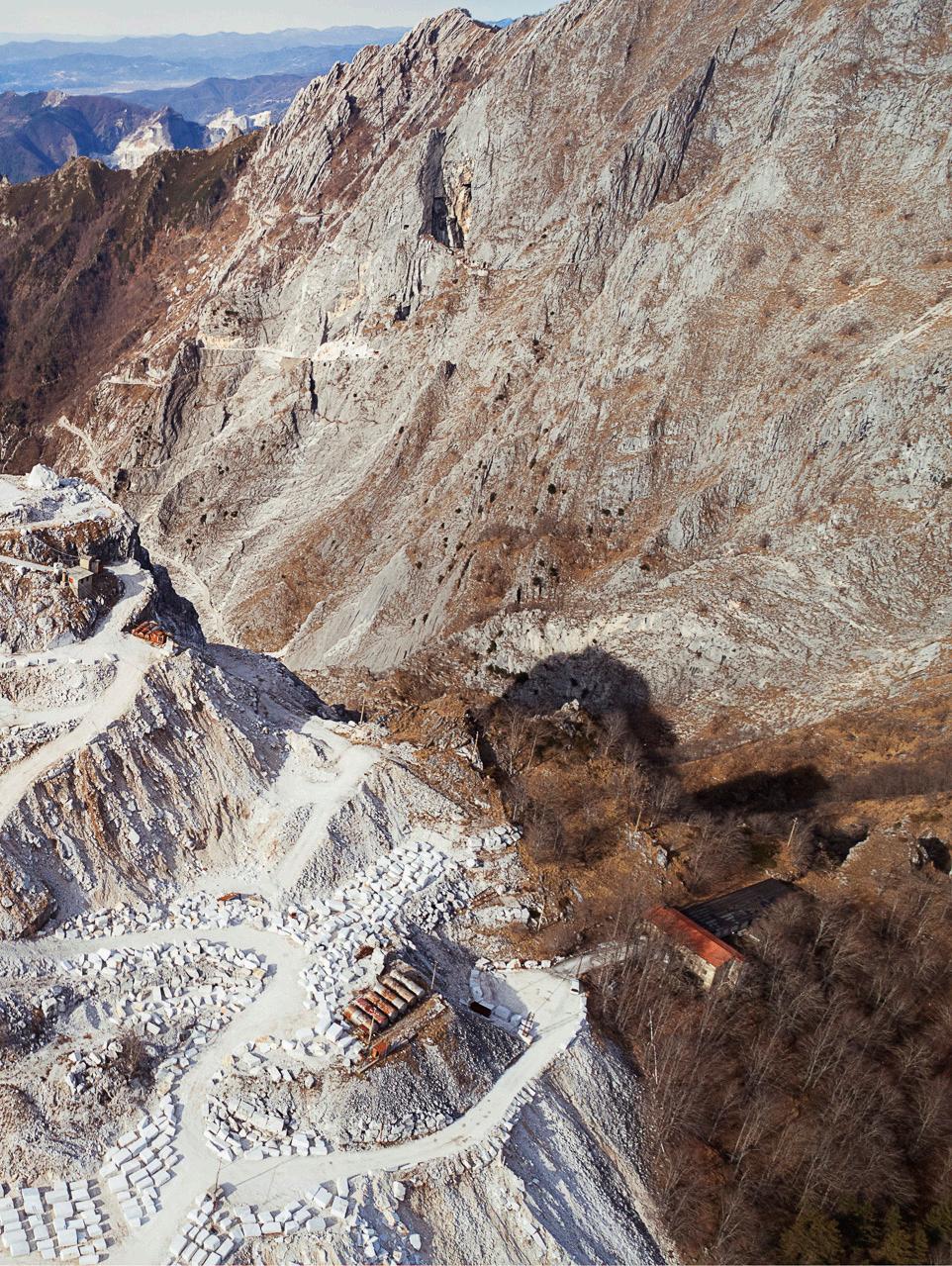
19

20
photo by Luca Locatelli

21
INTRODUCTION
I was born and raised in Carrara, a little city in Tuscany - Italy, home to the most renown marble in the world.
My family, as a significant part of the locals, is involved in the marble industry. Before starting my graduation project I’ve been to the quarries just once on a school trip in elementary school.
24
MY HOMETOWN

25
Marina di Carrara - 1992
CARRARA IN THE WORLD: MARBLE IN SCULPTURES
When I’m abroad and I mention Carrara, first thing that comes to mind to people around me is “marble”.
Indeed Carrara is famous for marble, especially the most noble utilisation of it: sculptures.
Although marble have been used for artistic purposes for over 2000 years, nowadays the amount of excavated marble that is used in this industry is less than 1%.
26
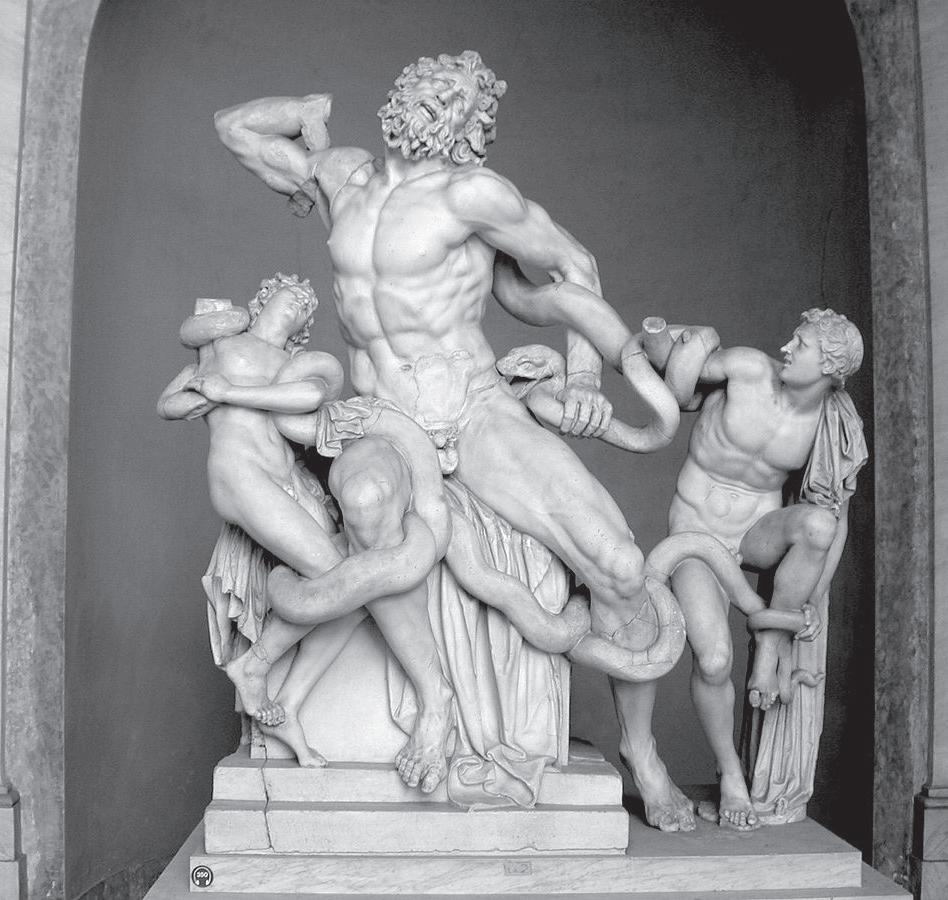
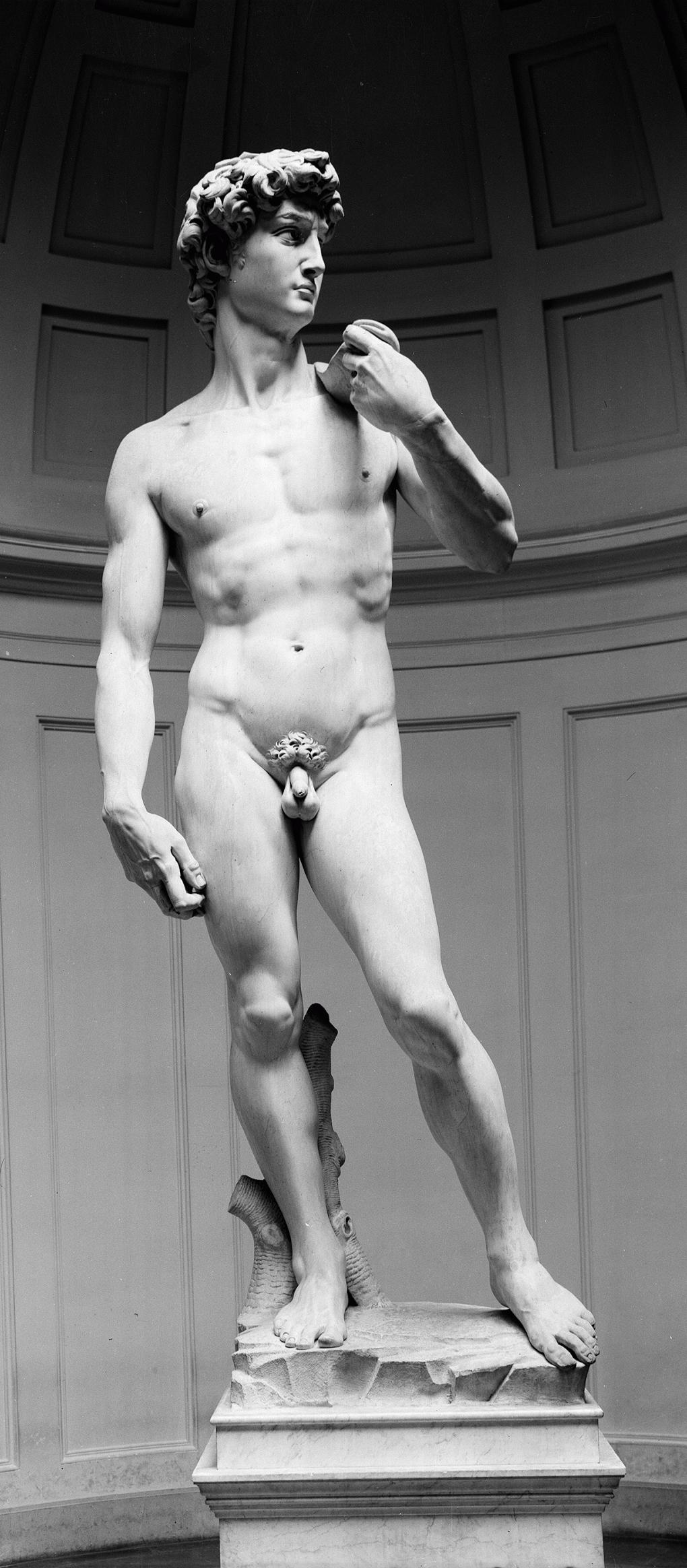
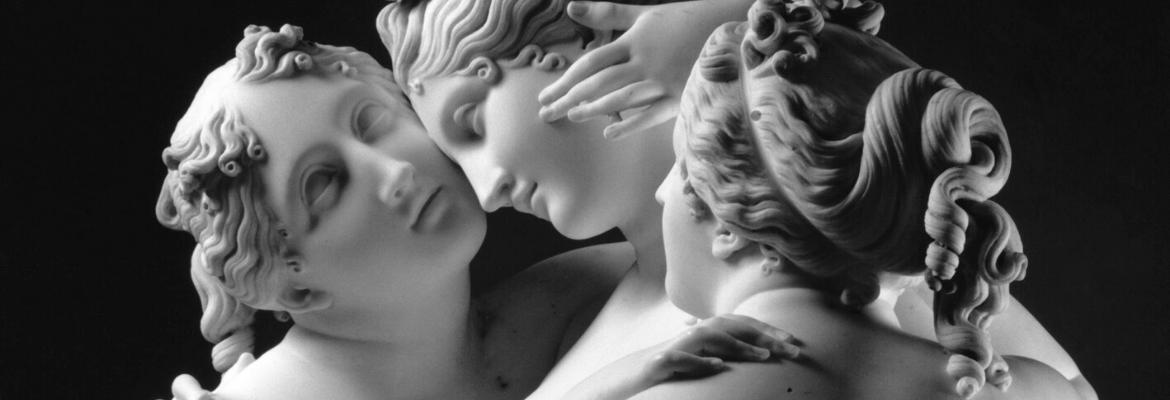

27
The Three Graces, 1812-17, Antonio Canova
David, 1501-1504, Michelangelo Buonarroti
Laocoön and His Sons, ±150 b.C., Agesander, Athenodoros or Polydorus
Il figlio velato, 2019, Jago
CARRARA IN THE WORLD: MARBLE IN ARCHITECTURE & DESIGN
The amount of marble used in architecture and design, despite being higher that the amount used for artistic purposes, is lower than I expected, around 25%
28

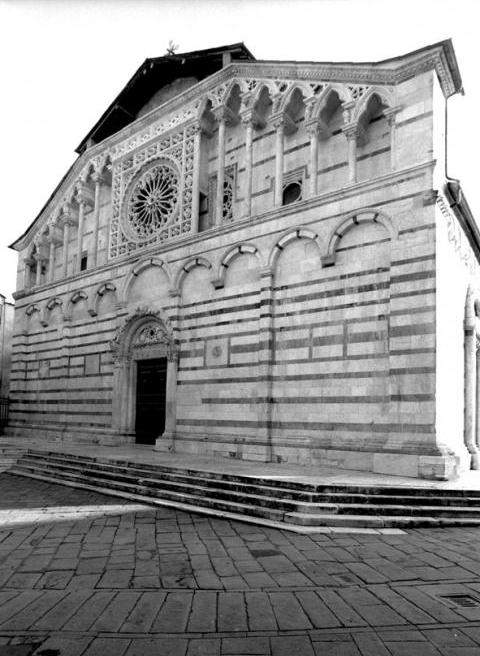




29
Enso-Gutzeit Co. Headquarters, Helsinki, Finland, 1962, Alvar Aalto
Pisa Tower, Italy, 1173, Bonanno Pisano Arco, 1962, Achille and Pier Giacomo Castiglioni
Carrara Cathedral, Italy, 1035
Zero, Milano Design Week, 2011,Snøhetta Norwegian National Opera and Ballet, Oslo, Norway, 2008, Snøhetta
HIDDEN FACTS: INDUSTRIAL PURPOSES
Although Carrara marble is known as a very luxurious and refined material, ± 75% of it is used for industrial purposes.
Being almost pure calcium carbonate (±98%) it becomes part of our everyday life and it’s used as:
- Abrasive material (such as toothpaste)
- Basis for cosmetics and pharmaceuticals,
- Dyes and paints
- Production of paper, glue, plastics and insulating materials,
- Food industry
- Element to reduce emissions from coal-fired power plants.
30


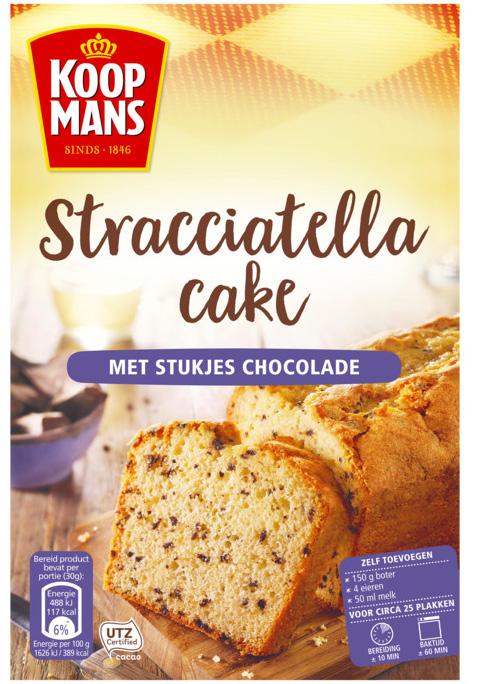



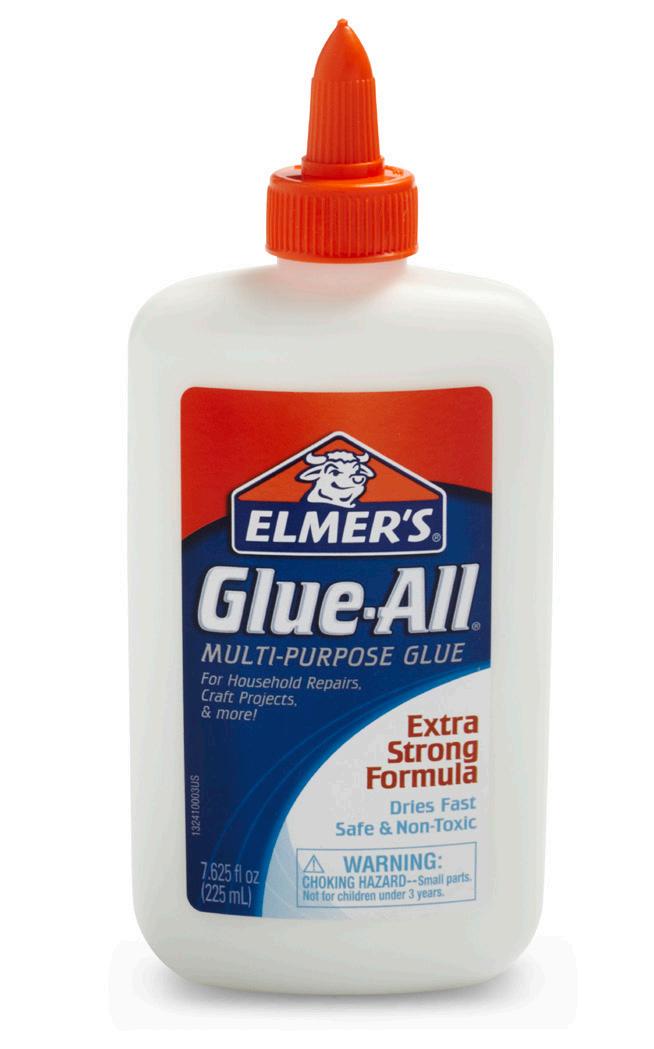
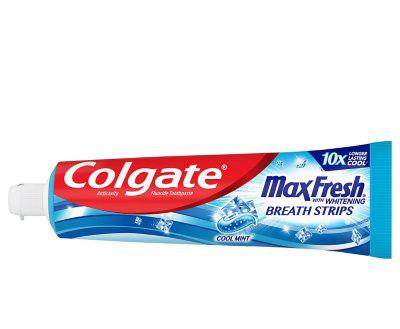

31
AT WHAT PRICE? ENVIRONMENTAL COST: THE QUARRIES
Not everybody knows what are the costs. We associate the name of Carrara with the marble but we forget about the quarries; the place where the marble has been carved out for thousands of years non stop.
32
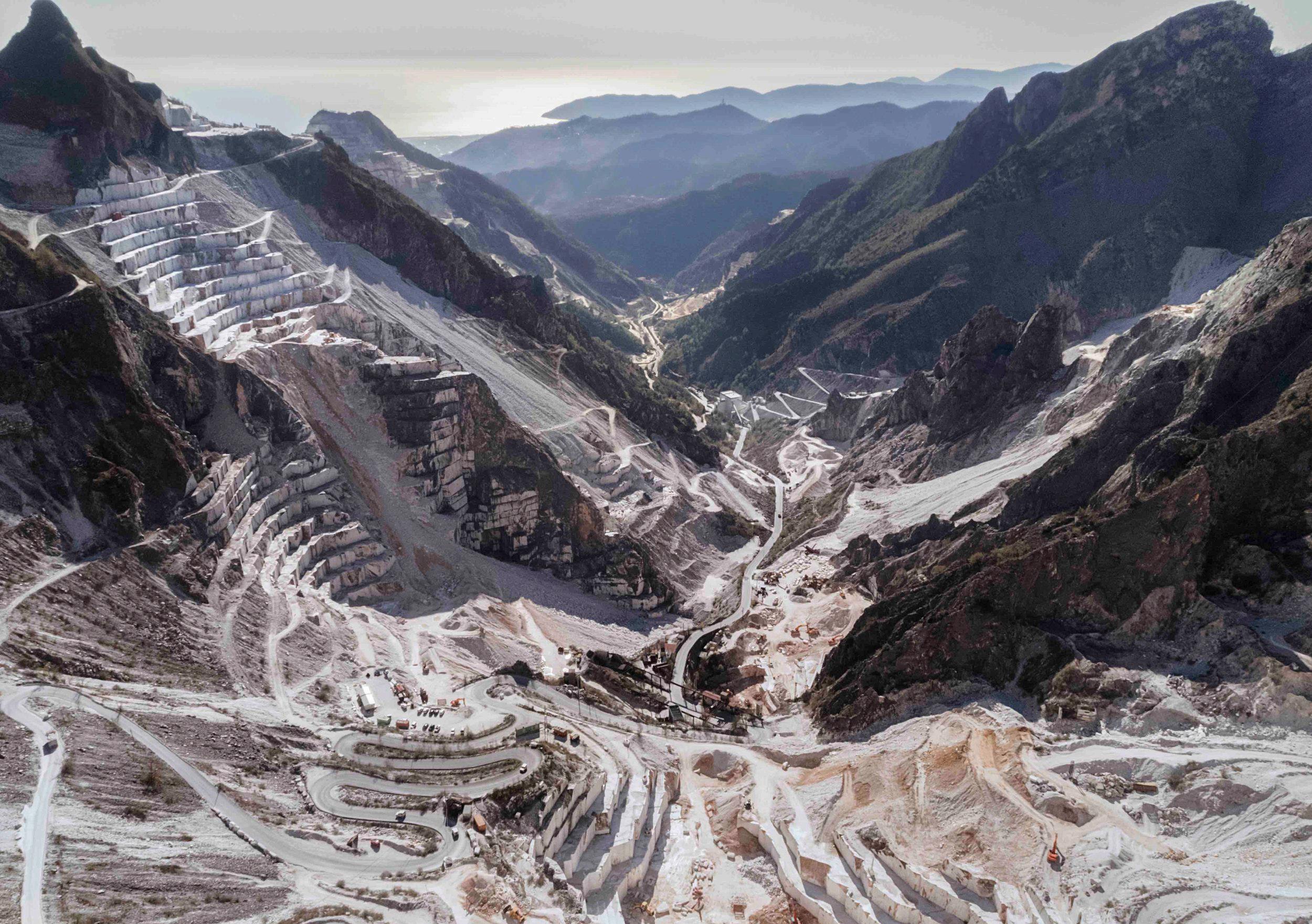
33
photo: Luca Locatelli
OVER 2200 YEARS OF NON-STOP EXTRACTION WITH NO REFLECTION
At the moment the quarries in Carrara are the oldest, vastest and highest stone quarries in the world.
The stone quarries of the Apuan Alps were already used during the Iron Age by the local population in their necropolis as tomb stones.
Then around 200 BC the Ancient Romans discovered it and sent slaves to work.
2200 years later many things changed in terms of transportation and extracting technologies, but the industry never stopped and went on for generations without much reflection.
34
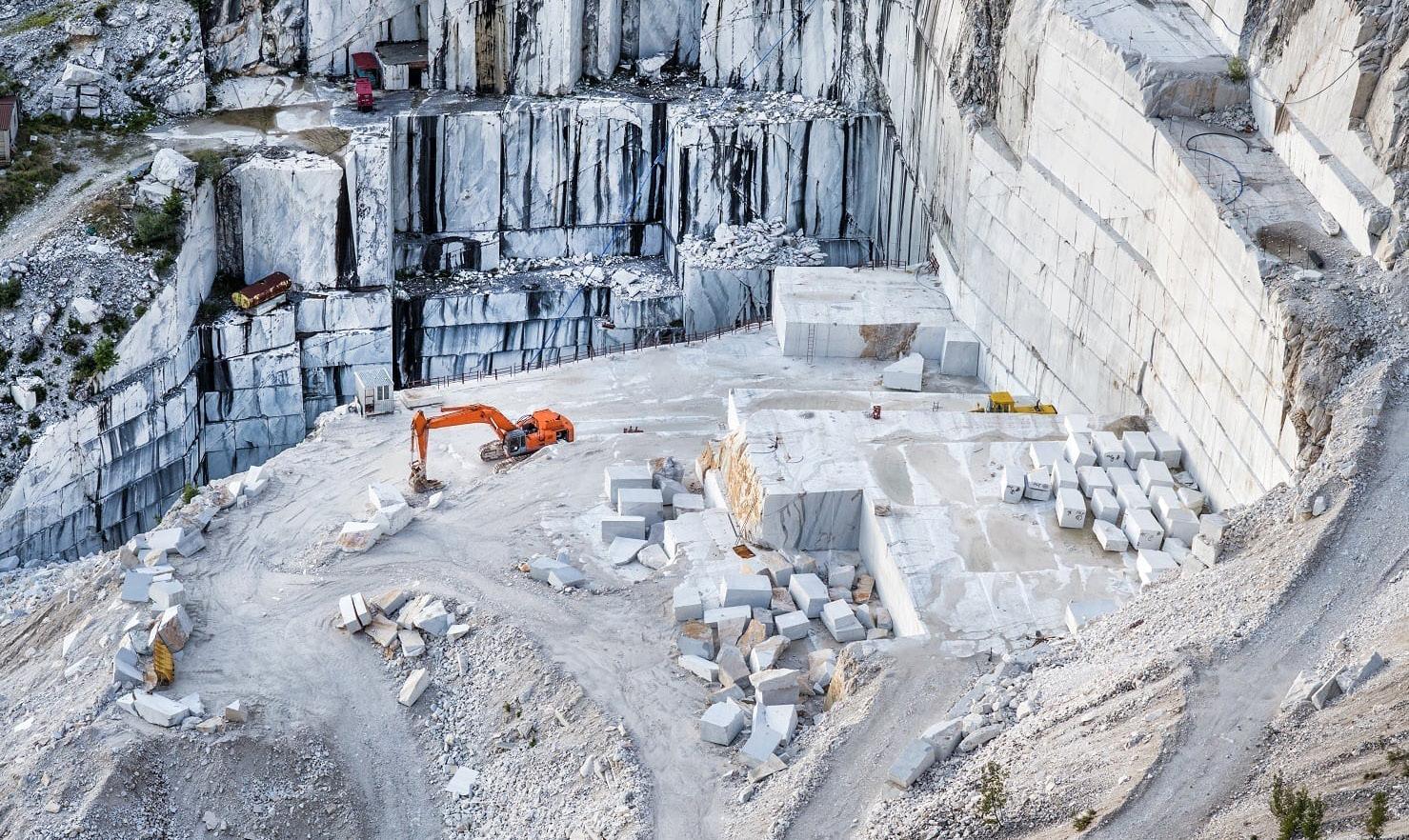



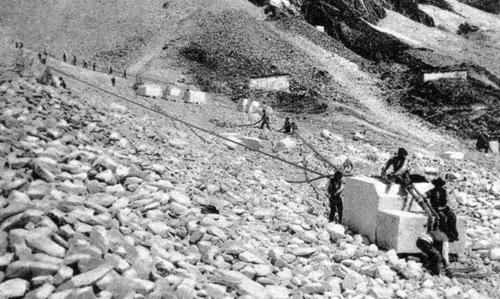

35
Luni Necropolis, 10 b.C.
A paining dated 1810 representing Carrara quarries
Lizzatura as a transportation system
Marmifera as a transportation system
Il Monolite the biggest block ever extracted: 17,4 x 2,2 x 2 m
Modern quarry
FROM THE LOCAL POINT OF VIEW: WE DON’T SEE IT
Marble is part of the daily life of the inhabitants.
Entire façades, pavements, tree pots, benches, stairs, window frames, tables are made out of marble. And the list goes on.
Yet is never a highlight. Marble is used as a tool and it’s never the main goal. The locals don’t “see” marble.
36
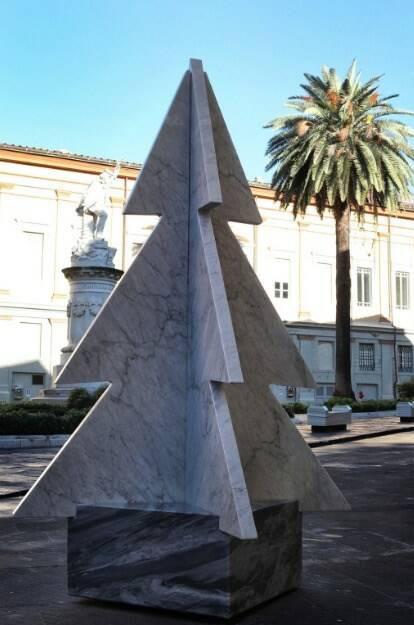


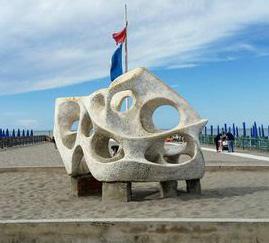

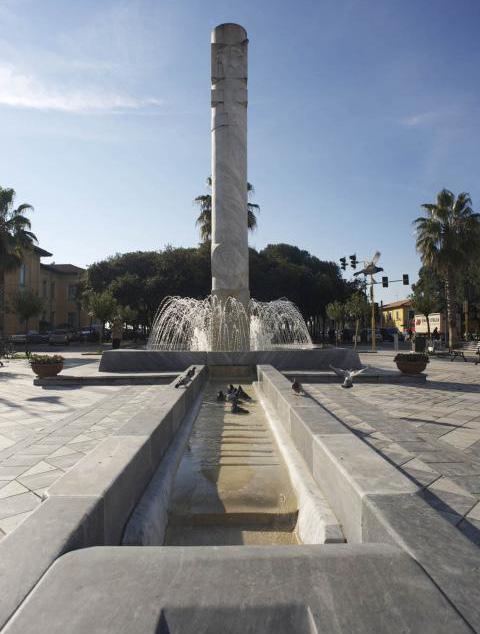
37
Playground on the public beach of Marina di Carrara
Christmas tree in Carrara Wall in Carrara
Square and fountain in Marina di Carrara
Supermarket floor in Avenza
Square, plant vase, fountain in Carrara
We live in a world where the goods are disconnected from the process that enabled us to access them.
We are not aware of the embodied energy - as the total energy required for the extraction, processing, manufacture and delivery of materials.
38
FROM THE GLOBAL POINT OF VIEW: WE ARE NOT AWARE OF THE PROCESS
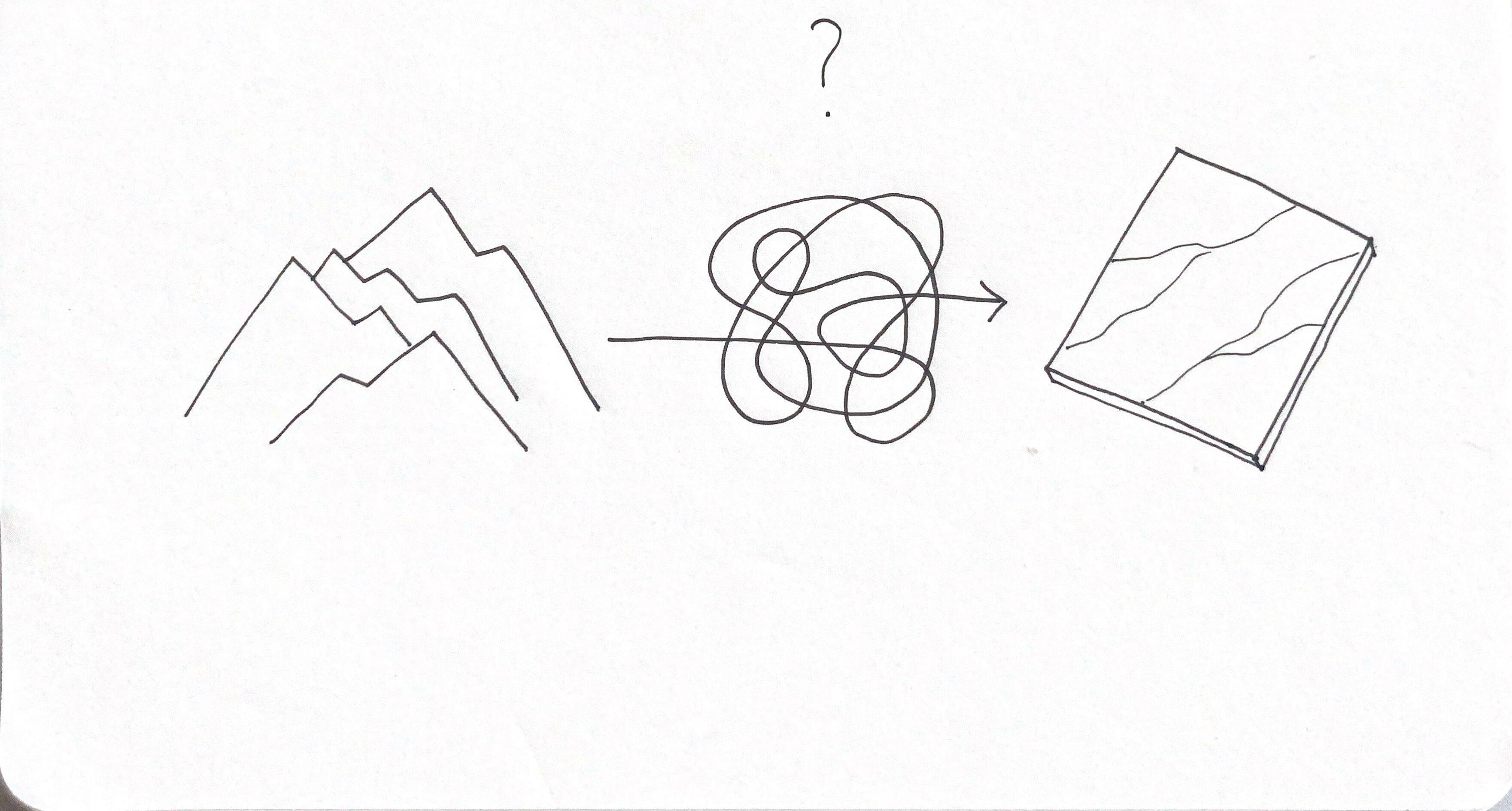
39
My goal is telling this story, exposing the connection between the product - marble - and its resource - the quarry - through architecture.
My project is a full-scale reflection on the process that starts with the extraction in the quarry and ends with the shipping of the marble worldwide, going through all the important stages that are needed to make this happened.
Carrara gives you the opportunity to use architecture to tell the story of marble and its quarries in a meaningful and relevant location.
40
MY GOAL

41 !
CONCEPT
There are certainly costs and benefits linked to the marble industry.
My role as an architect is not to stop or push this business by making a critique or a tribute.
My project’s aim is to raise awareness on the process, the different factors and energies that are needed in order for you to hold a piece of marble.
And I’m going to do it using one day worth of marble.
44

45
The average amount of marble extracted daily is 4000 m3.
Roughly the volume of five dutch row houses.

- I extracted this amount of marble from the quarries (Cave).
- I made four architectural follies out of this material.
- Then I placed these follies of marble in the other four strategic locations: Carrara, Avenza, Marina di Carrara, Mare.
46
These points are symbolic. Each of them talks about a different aspect of this story -a theme- and it’s linked in a direct or metaphorical way to the specific location.
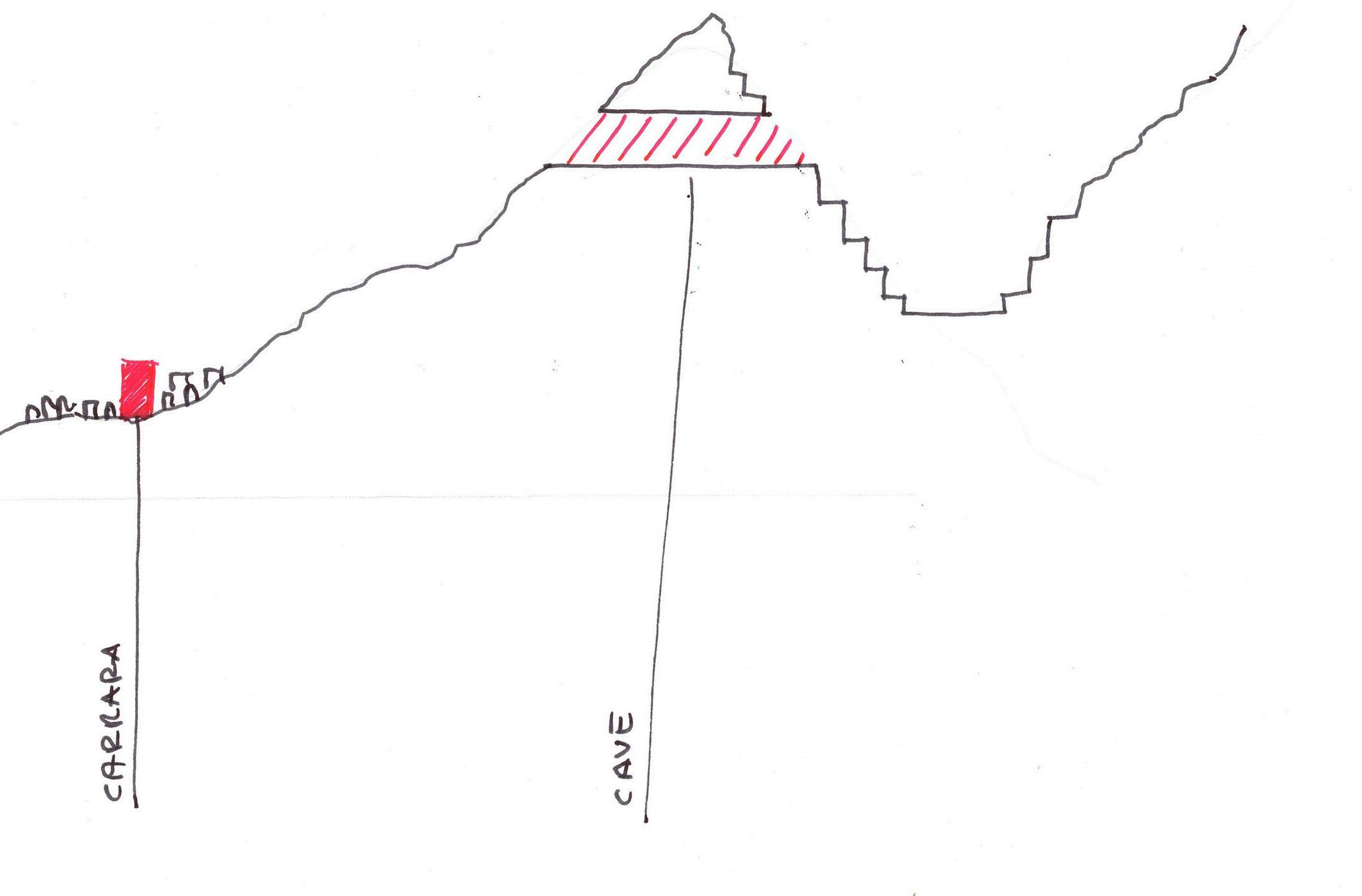
47
The mountain is carved out once again but for a different reason.
This time the marble won’t become - as it would normally happen - sculptures, anonymous urban furniture, small decoration objects or powder for industrial purposes.

This time the marble is telling its own story, in its own city, with its own rules.


MASTERPLAN & THEMES
52 MASTERPLAN
53
CAVE Environmental cost
Monte Bettogli
Quarrying has a huge environmental cost due to the continuous man-made landscape reshaping that causes : - changes in the micro-climate, - creates groundwater pollution, - changes the skyline of the mountains, - increases the risk of flooding, - deforestation
And the Quarry area is the where all this is visible.
54
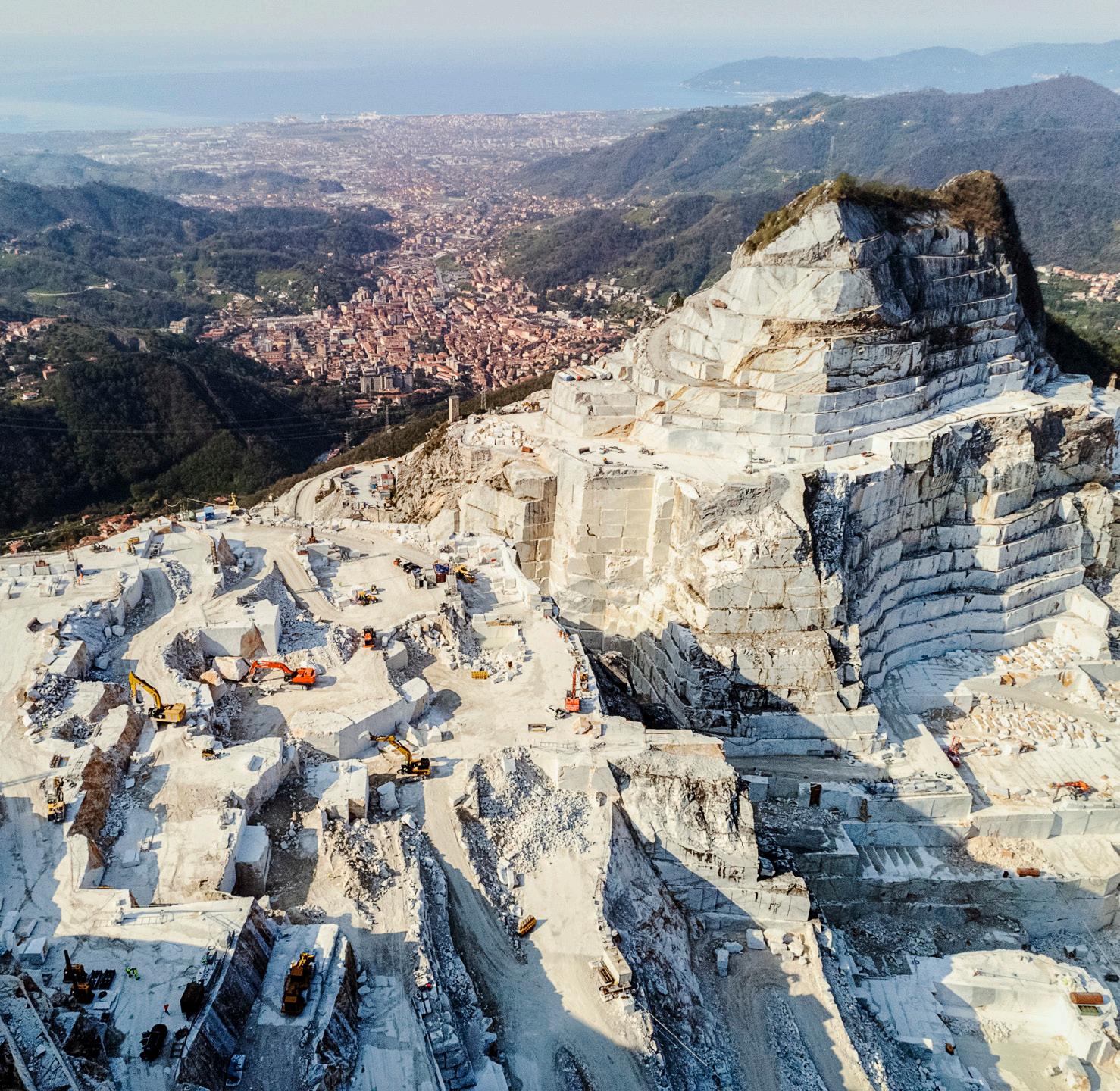


CARRARA Geological cost
Piazza D’Armi
The Marble is not a renewable material. The mountain doesn’t grow back.
The Apuan Alps formed in the Mesozoic Era and it took 250 million years for this non-foliated metamorphic calcareous rock to form.
The marble in Carrara has 7 different qualities.
The city centre of Carrara not only has a direct view to the mountains, but it also hosts a lot of urban elements that shows the different marble qualities and textures.
56
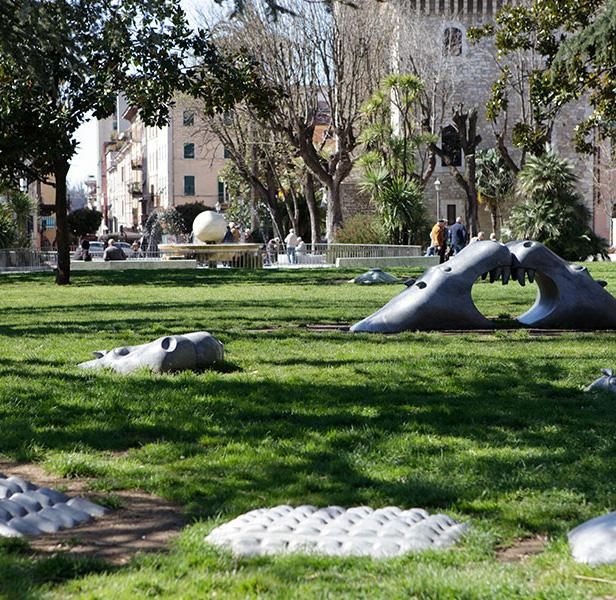



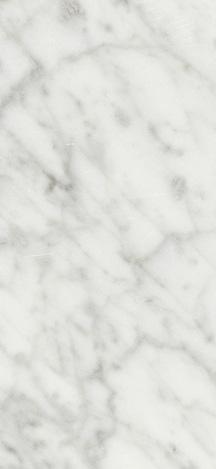
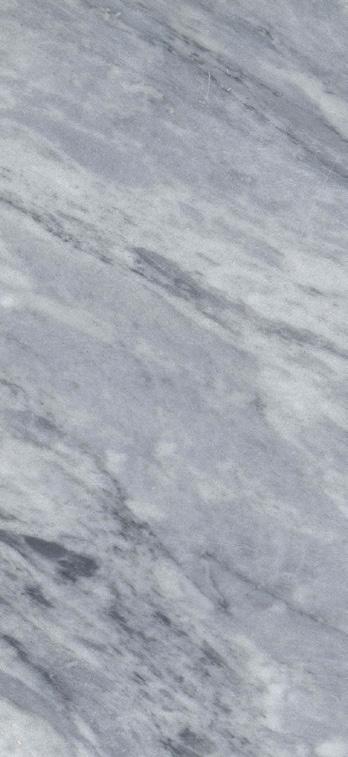
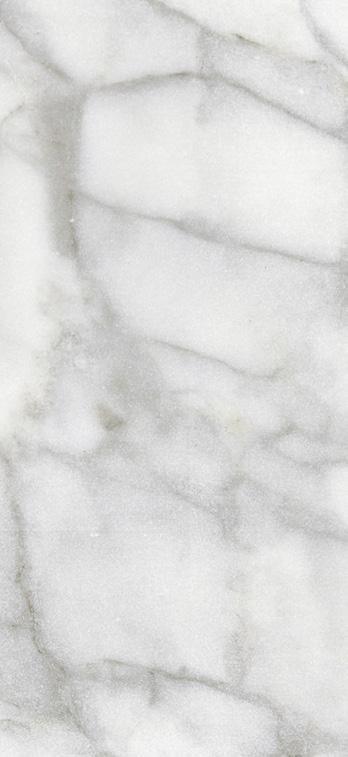
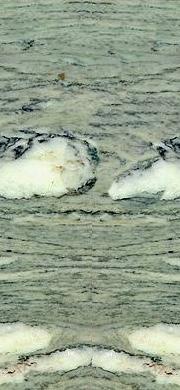
57BIANCO
STATUARIO VENATO
ARABESCATOCALACATTA
BARDIGLIO CIPOLLINO
AVENZA Transportation
Carrara-Avenza Train Station
The Marble has been transported in various way:
- Lizzatura with oxen
- Through a private railway called Marmifera
- With trucks (today)
Marmifera was 33 km long and has been used for almost 100 years and there are still some visible remains. In order to make the Marmifera, they had to cut galleries through the mountain into an arch.
Avenza is where the normal train station is located and where the old railways of Marmifera are still visible.
58

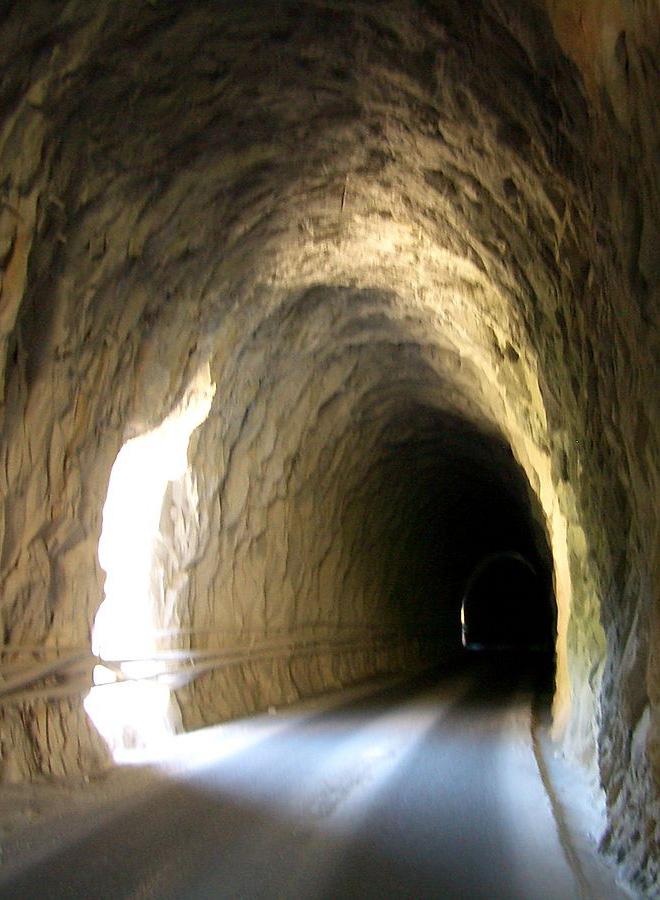


MARINA
Human cost
Public beach near commercial port
Although there are a lot of new technologies, the human energy is still essential in all these stages, from carving, to transporting, to shipping.
A job that in Roman times was made by the toughest slaves is now made by generation of local workers that risk their lives every day in a hostile environment, especially Tecchiaioli, Cavatori and Portuali.
Marina di Carrara is the last contact point between the local workers and the marble before this gets shipped.
60



MARE Farewell
Ex Idrovora
Nowadays the main method to distribute the marble worldwide is through shipping, and this happens in the commercial port of Marina di Carrara.
The sea is the last contact point between marble and the city of Carrara.
Mare gives you one last time the opportunity to: - experience the present the marble in its element : nature - look towards the future of this industry - look back to the whole process
62



DESIGN
Environmental cost
GOAL
show 4000 m3 void
show the difference between the natural and the quarry side
by creating a 4000 m3 void & connection the two sides of the mountain
physically by a open air staircase and then a long and dark gallery
gallery type extraction
HOW PROCESS REACH LANDING
honed + saw cut
TEXTURES
66 CAVE
52 x 5 x 16 m
//
67
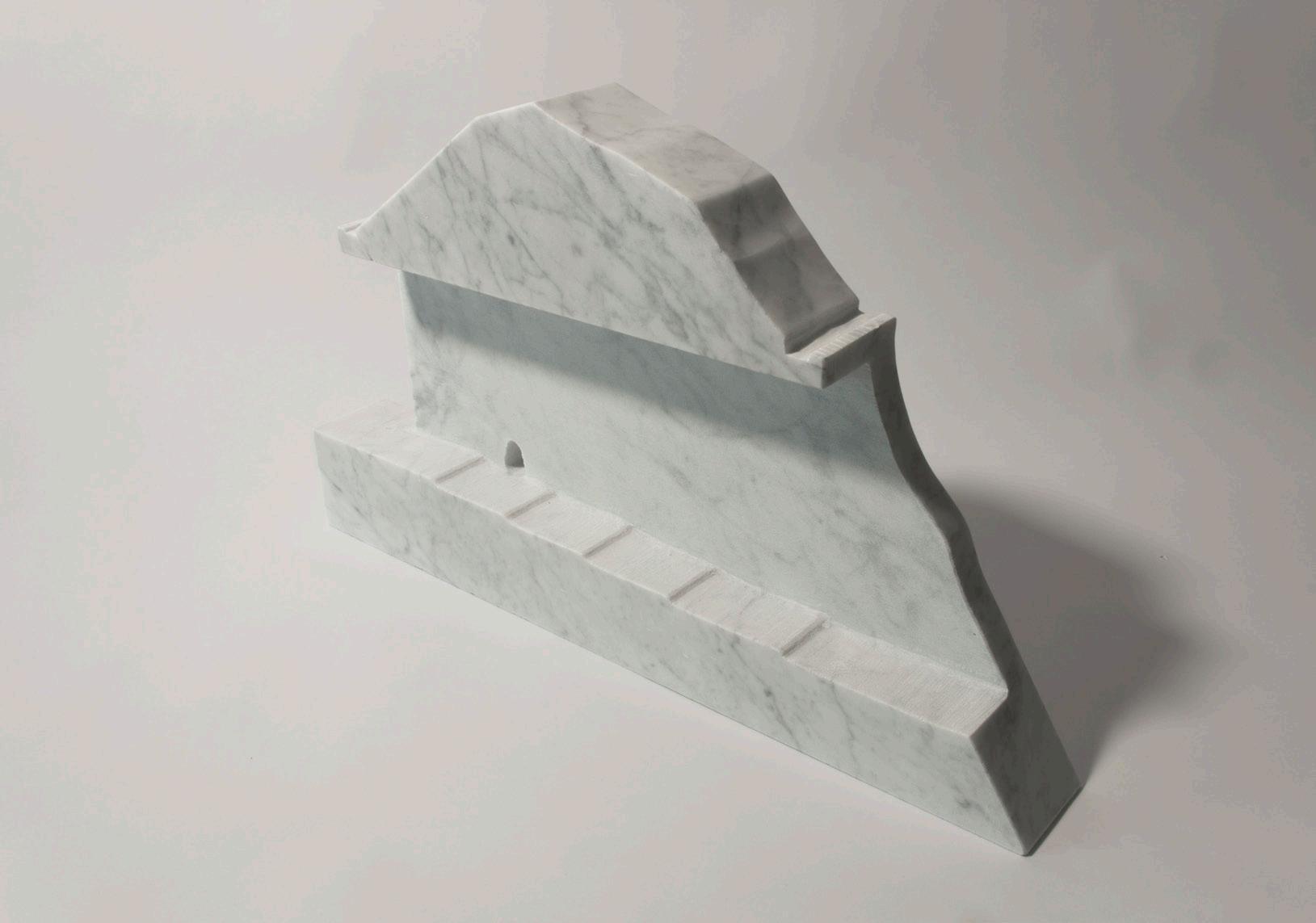
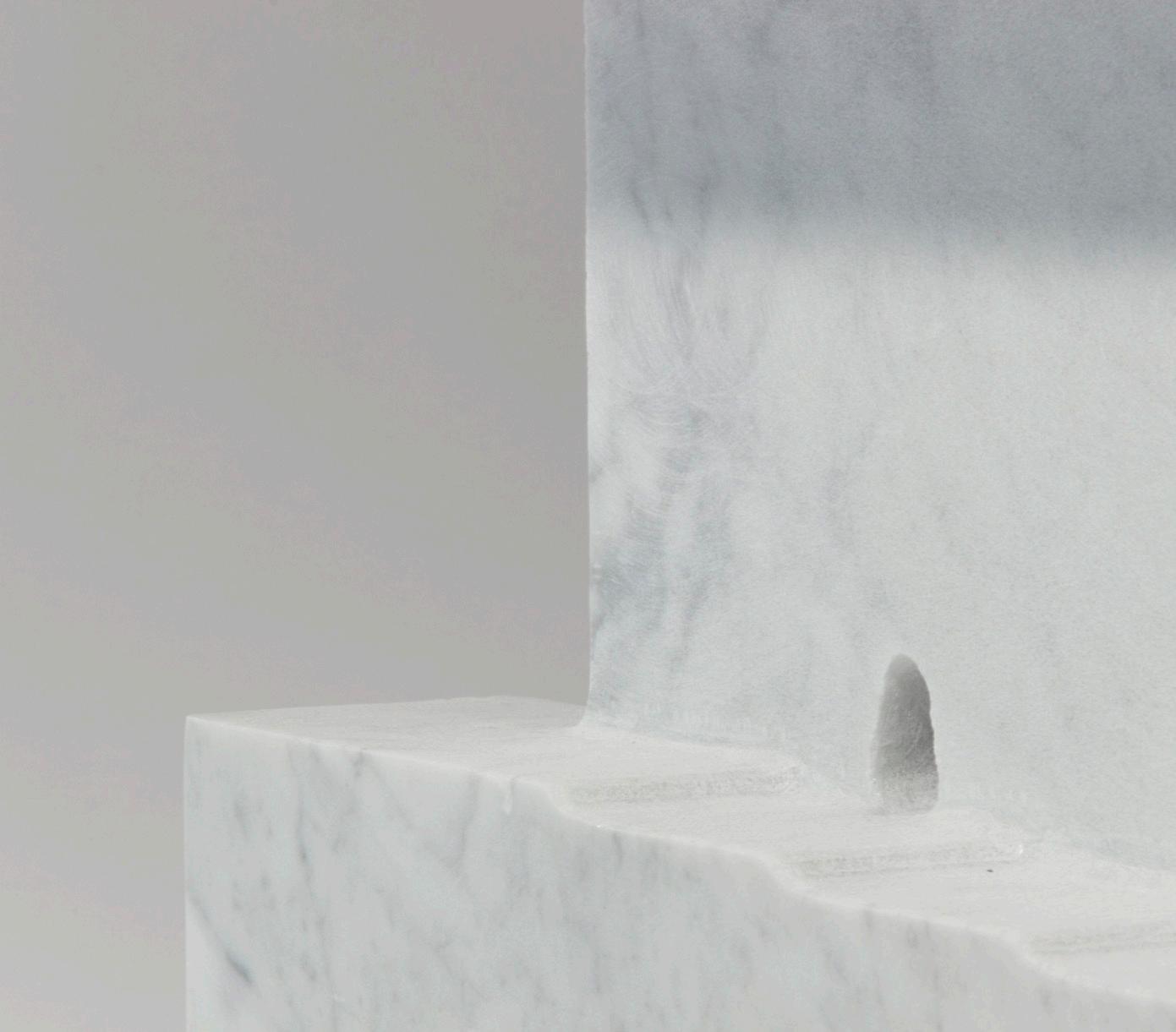
68 MARBLE MODEL 1:100


69
70 A B B'
71 A'
72 SECTION AA'
73
74 ENTRANCE STAIRS 1:20
75 GALLERY 1:20
76 Cave long section scale 1:200 SECTION BB'
77

78

79
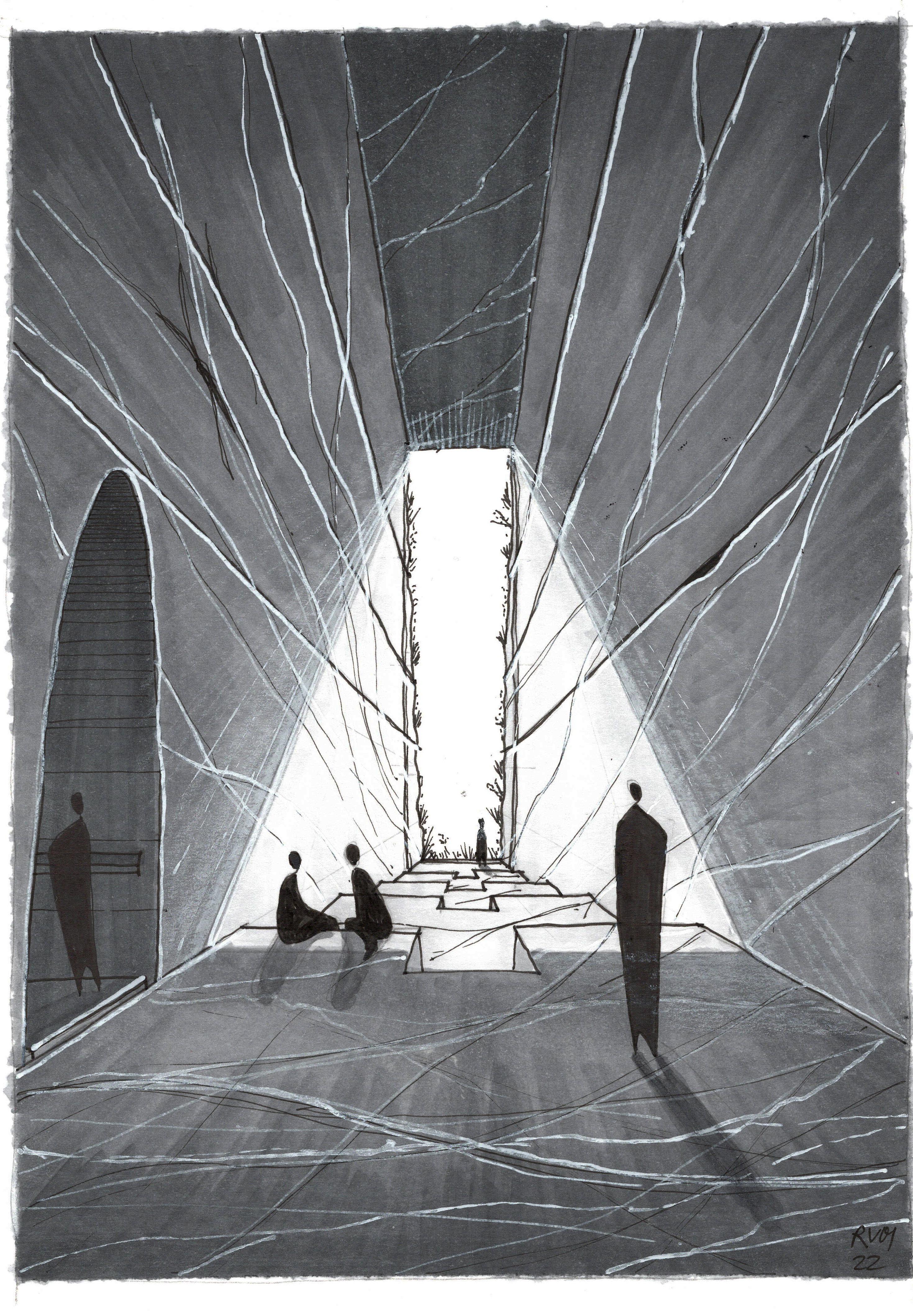
80
81
CARRARA
Geological cost
8,6 x 5 x 30 m devided in 14 blocks
show different marble qualities with sight and touch
by stacking 7 marble qualities in a tower and highlighting the connecting line on a eye-heigh platform with natural light
GOAL HOW PROCESS REACH
blocks are extracted, sculpted, stacked on dowels and secured horizontally by walking through the garden
LANDING
2 m stuck in the soil and secured to marble underneath
walls polished floor honed
TEXTURES
82
83


84 MARBLE MODEL 1:100
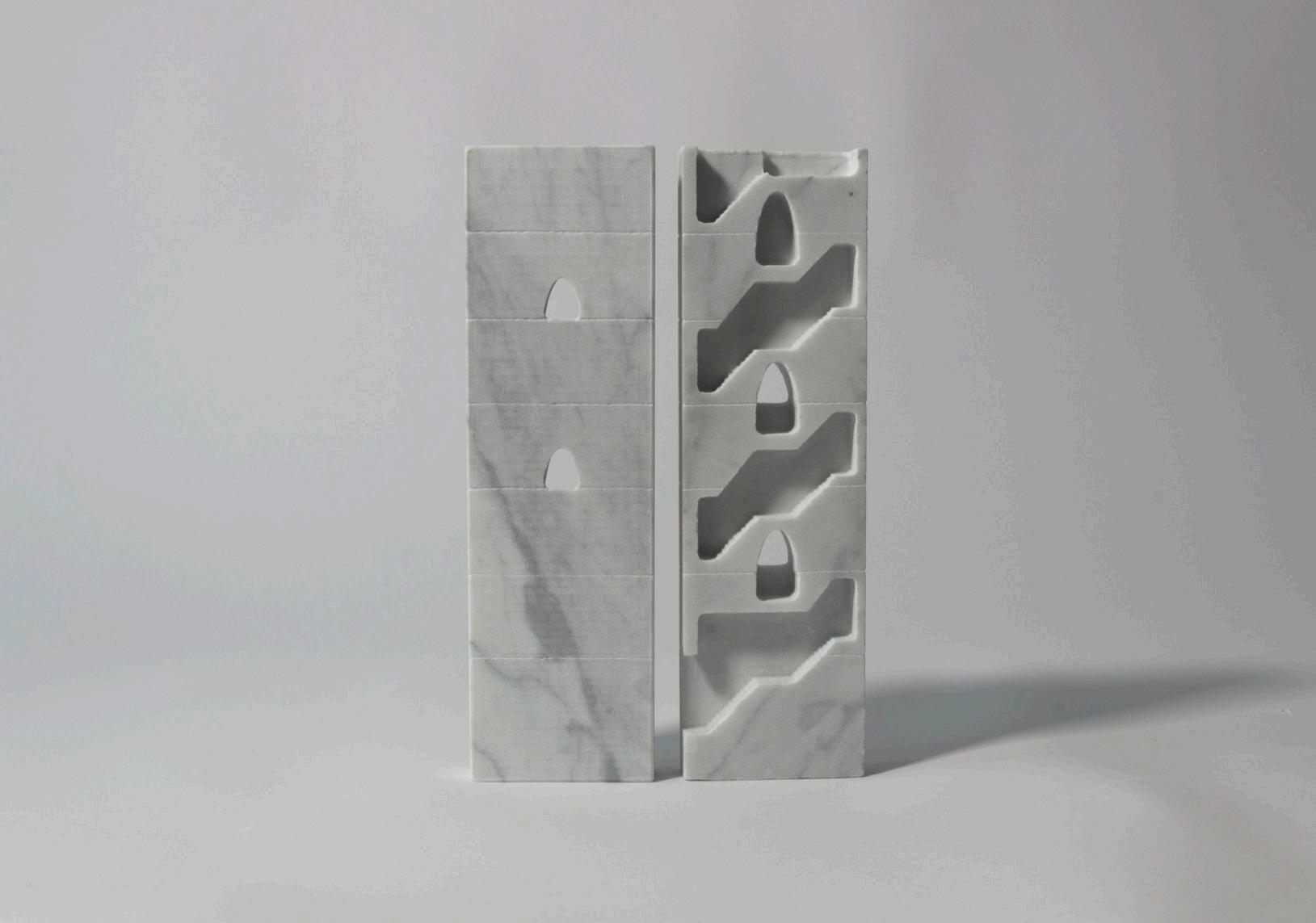


85
86
87
88 +2600mm BLOCK 1 A' B B' A +6600mm+4600mm BLOCKS 2 - 5
89 +22600mm+20600mm BLOCK 6 +24600mm BLOCK 7 +26800mm
90 SECTION AA’
91 SECTION BB’
92

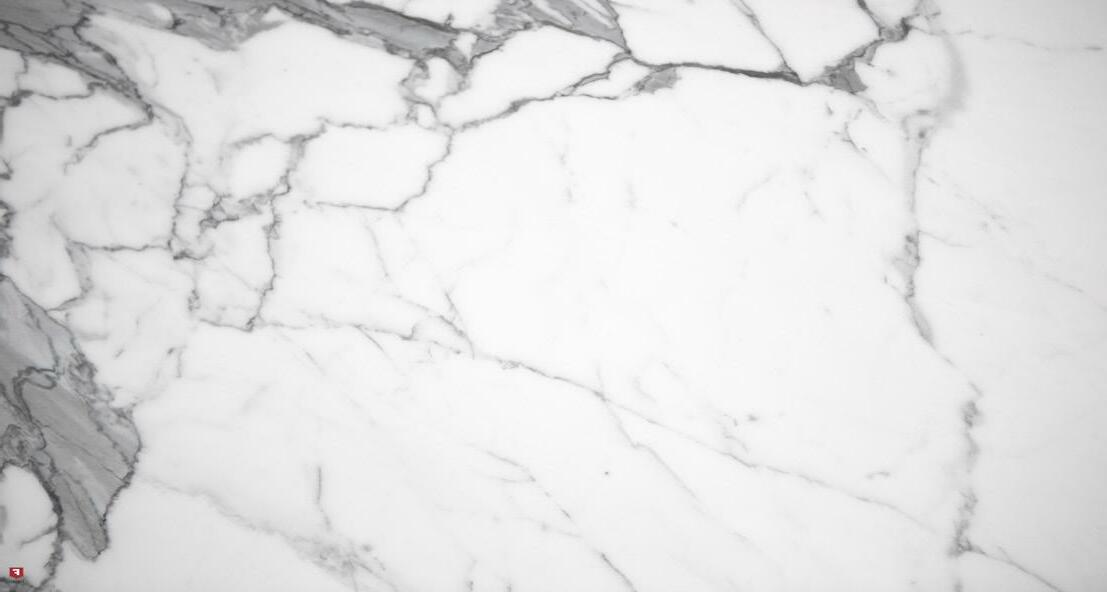





93 ELEVATION
94 BALUSTRADE 1:20
95 STAIRS 1:20
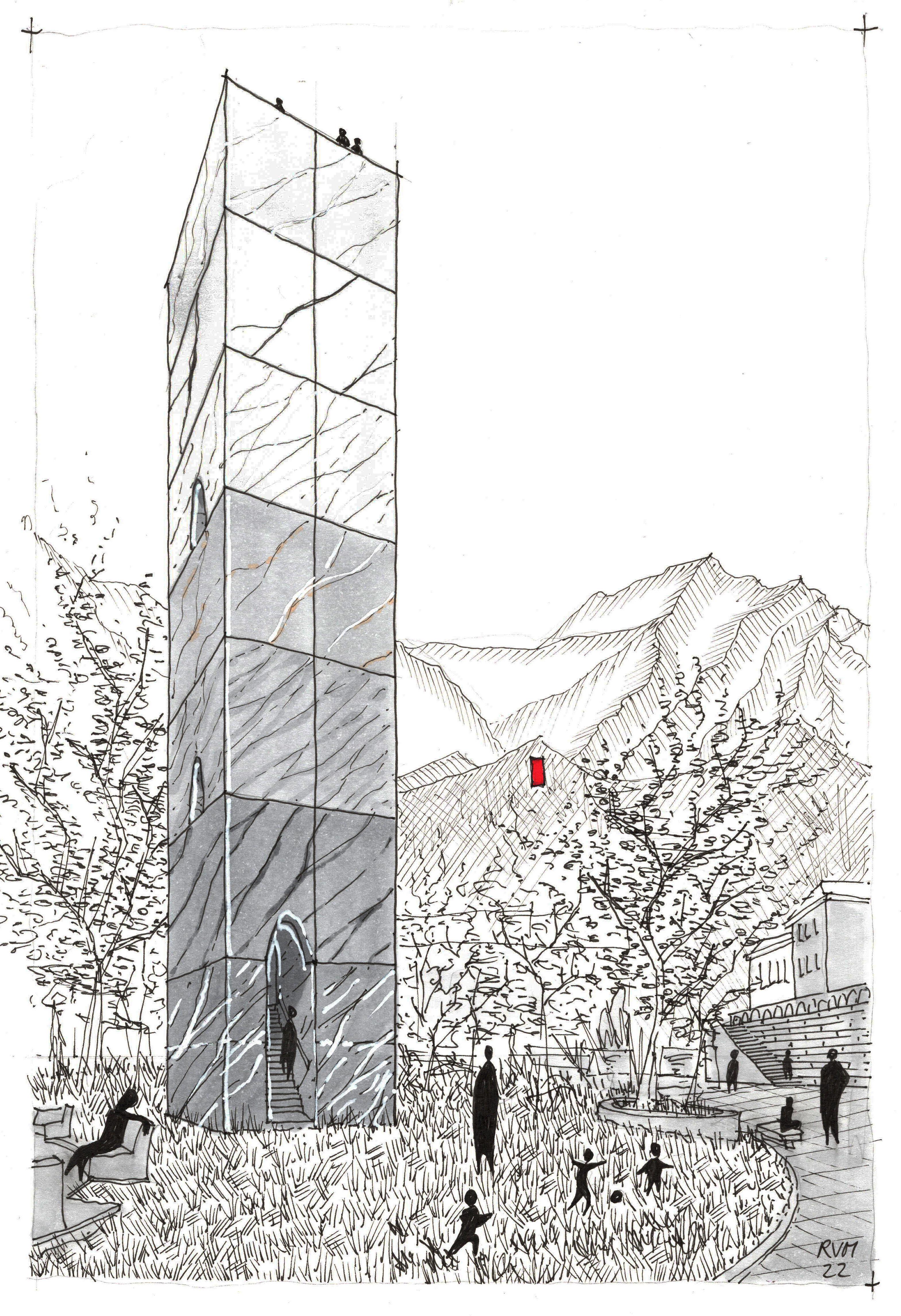
96

97
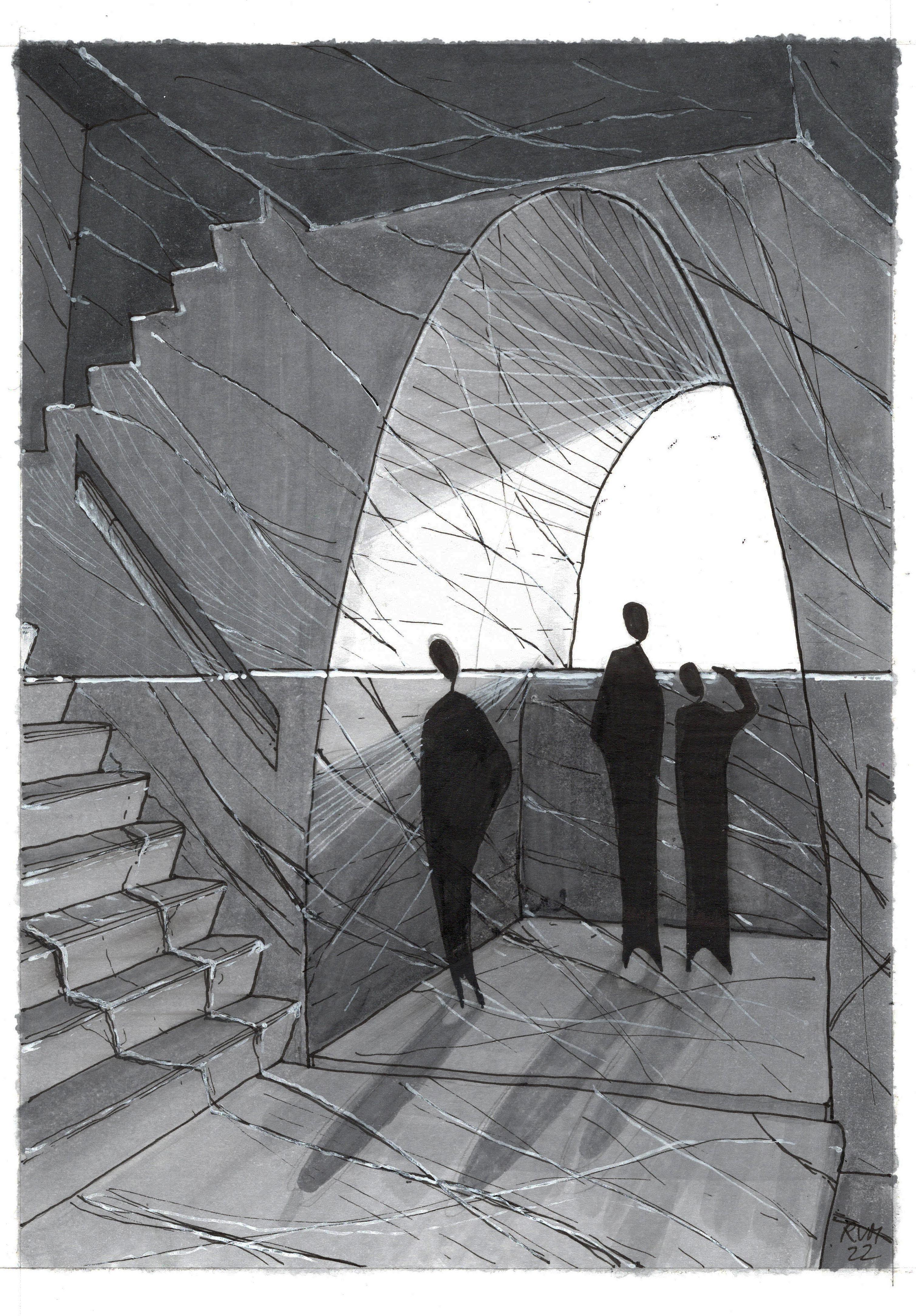
98
99
AVENZA
Transportation
33 arches on 506 m
each arch: 4 x 6,6 x 2 m
highlight marmifera and frame mountains
GOAL HOW PROCESS
by creating 33 arches shaped like the galleries and giving a rhythm to get maximum attention by stacking 4 standard blocks and chiselling an arch
phisically: from platform 2 visually: from train, platform 1, cave, viale XX Settembre, Carrione
LANDING
grooved + saw cut + chiselled
REACH
sitting on grass, hovering on a negative plinth, connecting with hard floor with long dowels
TEXTURES
100
101

102 MARBLE MODEL 1:100


103
104
105
106
107 SECTION
108
109 ELEVATION
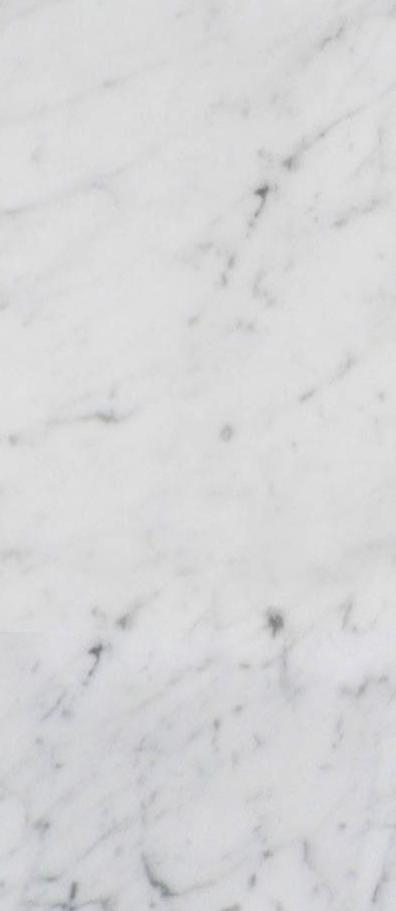
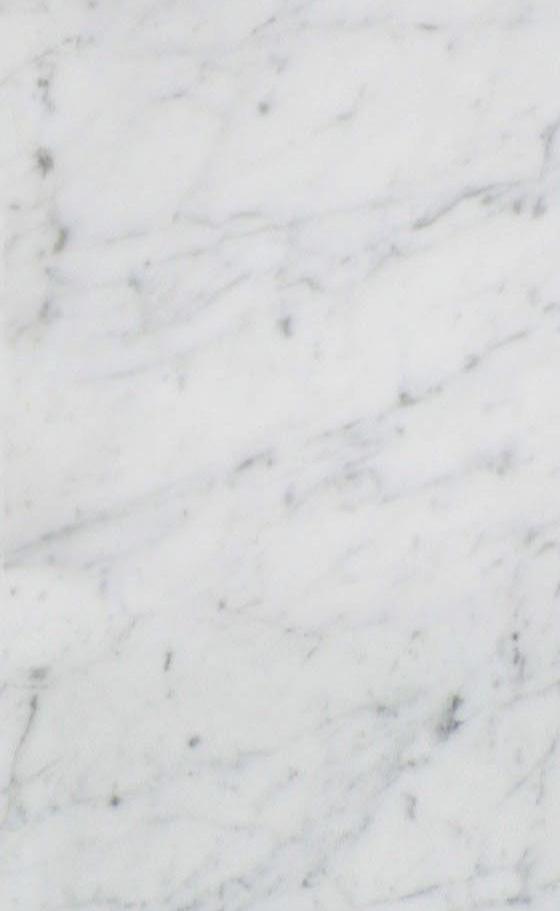


110 FRAGMENT FRONT



111 FRAGMENT SIDE
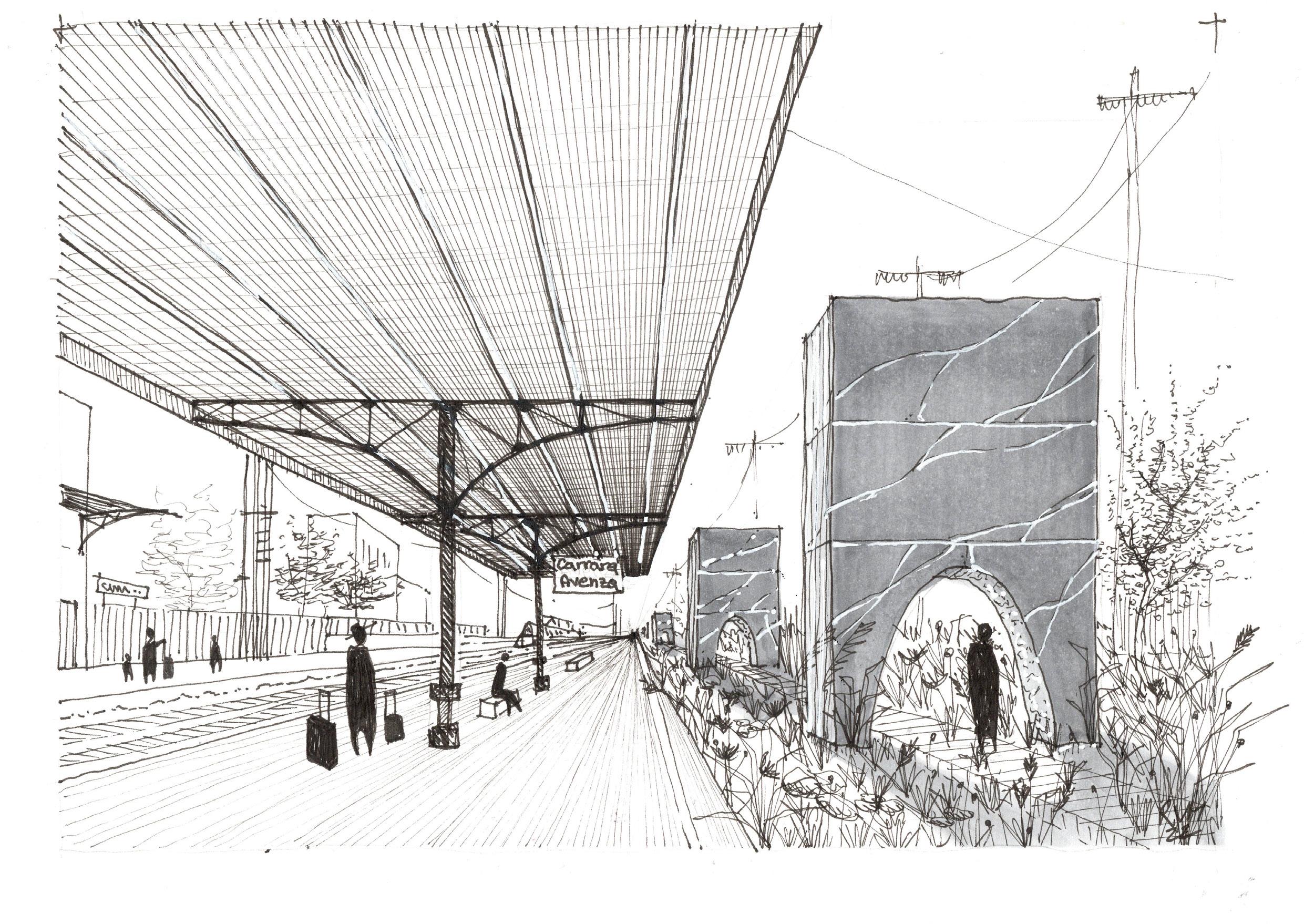
112

113

114
115
MARINA
Human cost 22
making you feel like a cavatore, portuale, tecchiaiolo
GOAL HOW PROCESS
making a path through claustrophobic shape and uncomfortable void 8 blocks extracted next to each-other (in 2 slabs) chiselled by hand
physically by walking on the beach
Visually from promenade, sea, coastline, Mare and Cave
LANDING
outside polished inside chiselled
REACH
stuck in 2 m of sand, connected with hard floor with dowels the floorline changes with the movement of the sand
TEXTURES
116
x 3 x 10 m
117


118 MARBLE MODEL 1:100
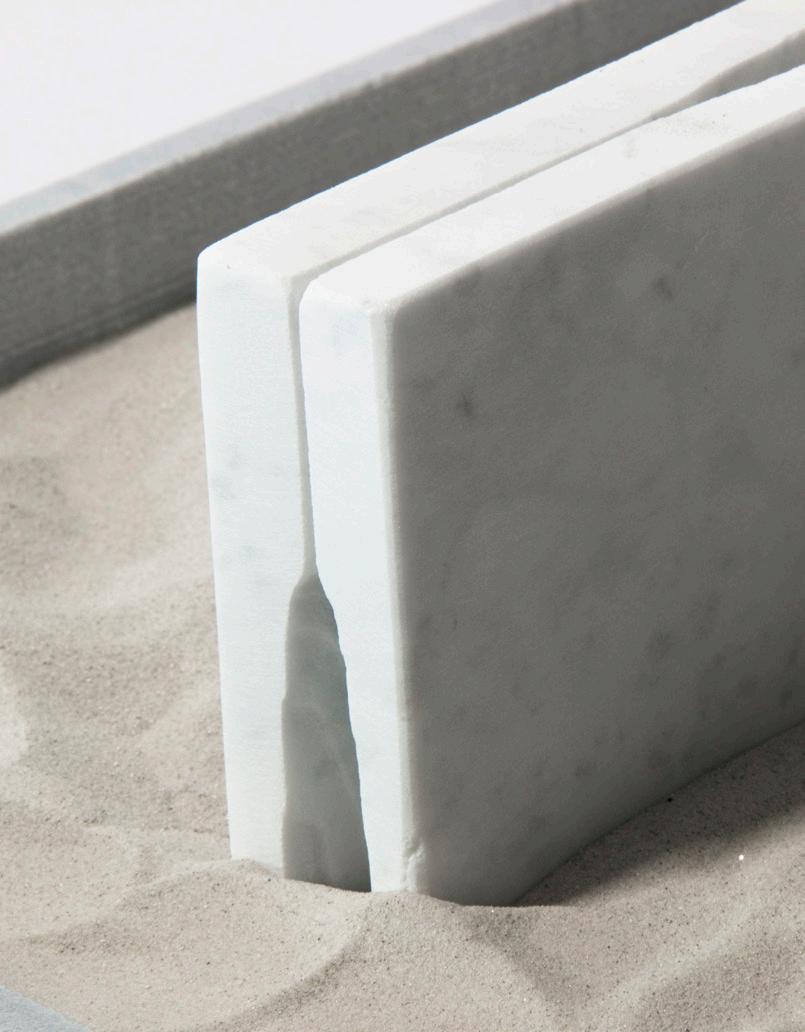

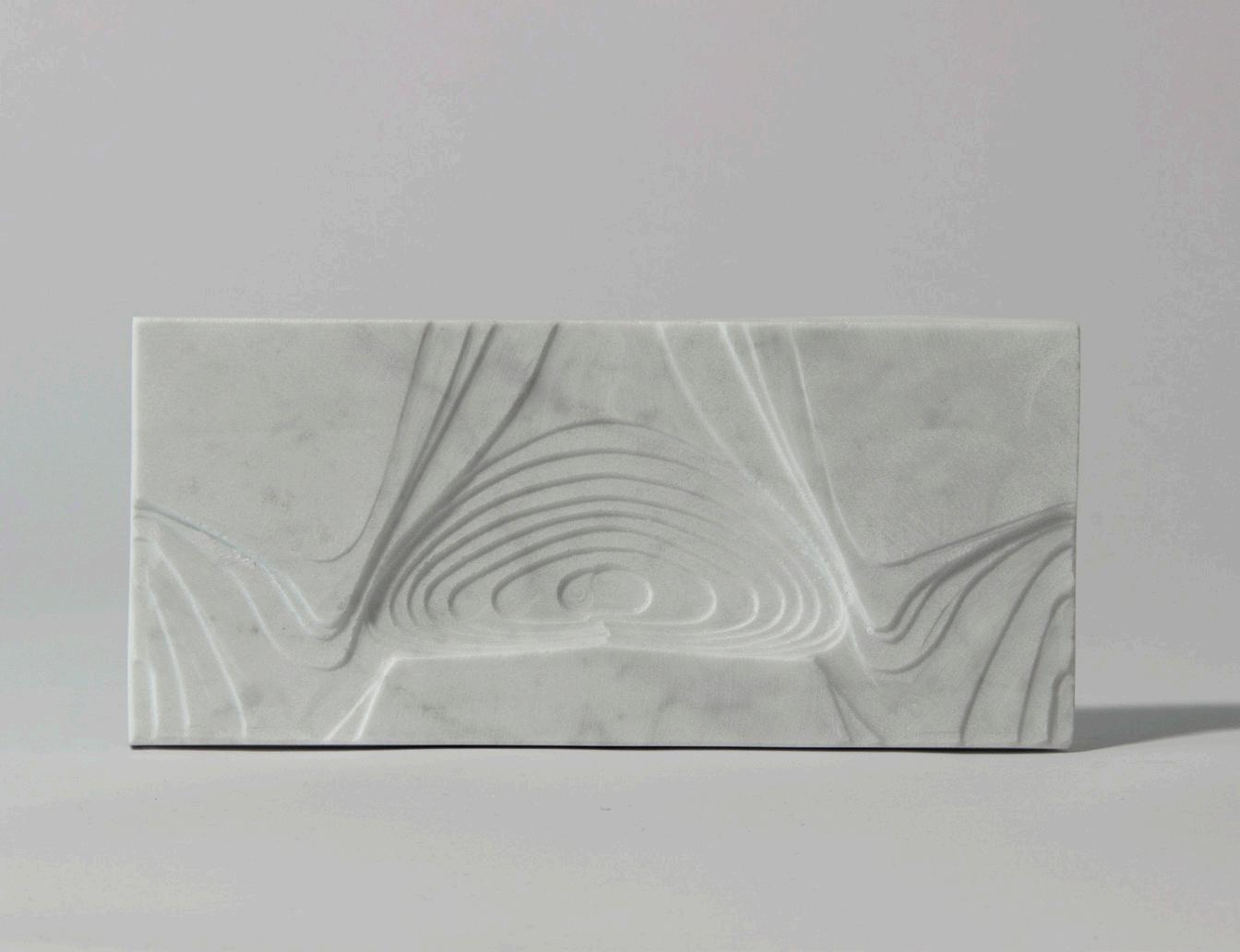
119
120
121
122 B B' A A' C C' D D' E E' + 10000 mm +0.00 mm + 3500 mm
123 4
BB' CC"
CC" DD' 10 EE"
124
Marina cross
section scale 1:100
125 AA'


126

127

128
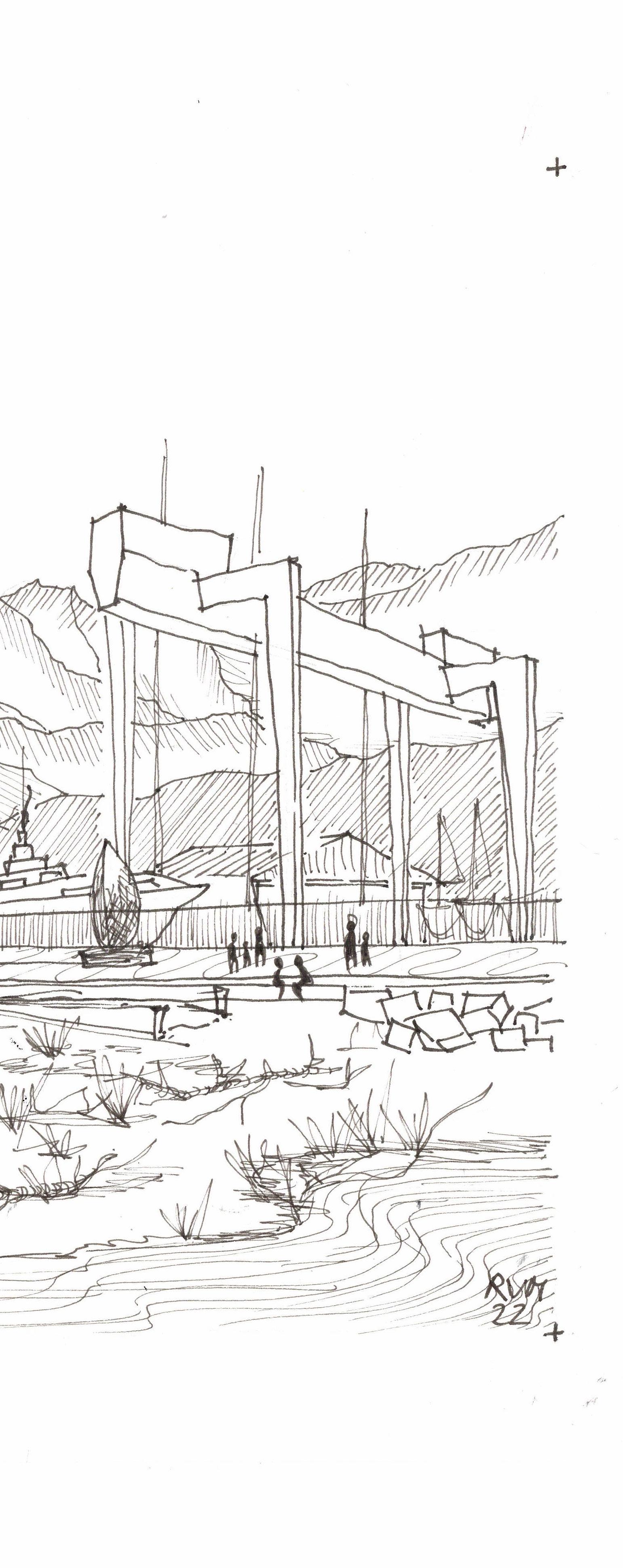
129
MARE
Farewell
give a place to look back to the man made process and reconnect with the natural elements
making a staircase towards the sea that become a tribune facing the mountains
GOAL HOW PROCESS
8 blocks are extracted next to each-other into two main slab, sculpted and secured on existing Idrovora remains with dowels
physically by swimming visually from promenade, sea, beach, Marina, Cave
REACH
LANDING
standing on idrovora 2 meters underwater, one of the two openings is at the water level, revealing the tides hammered
TEXTURES
130
22 x 3x 10 m
131


132 MARBLE MODEL 1:100


133
134
135
A
B' B
136
137 A'
138 SECTION AA’
139 SECTION BB’

140

141

142

143
MODELS
MARBLE

146

147 MODELS

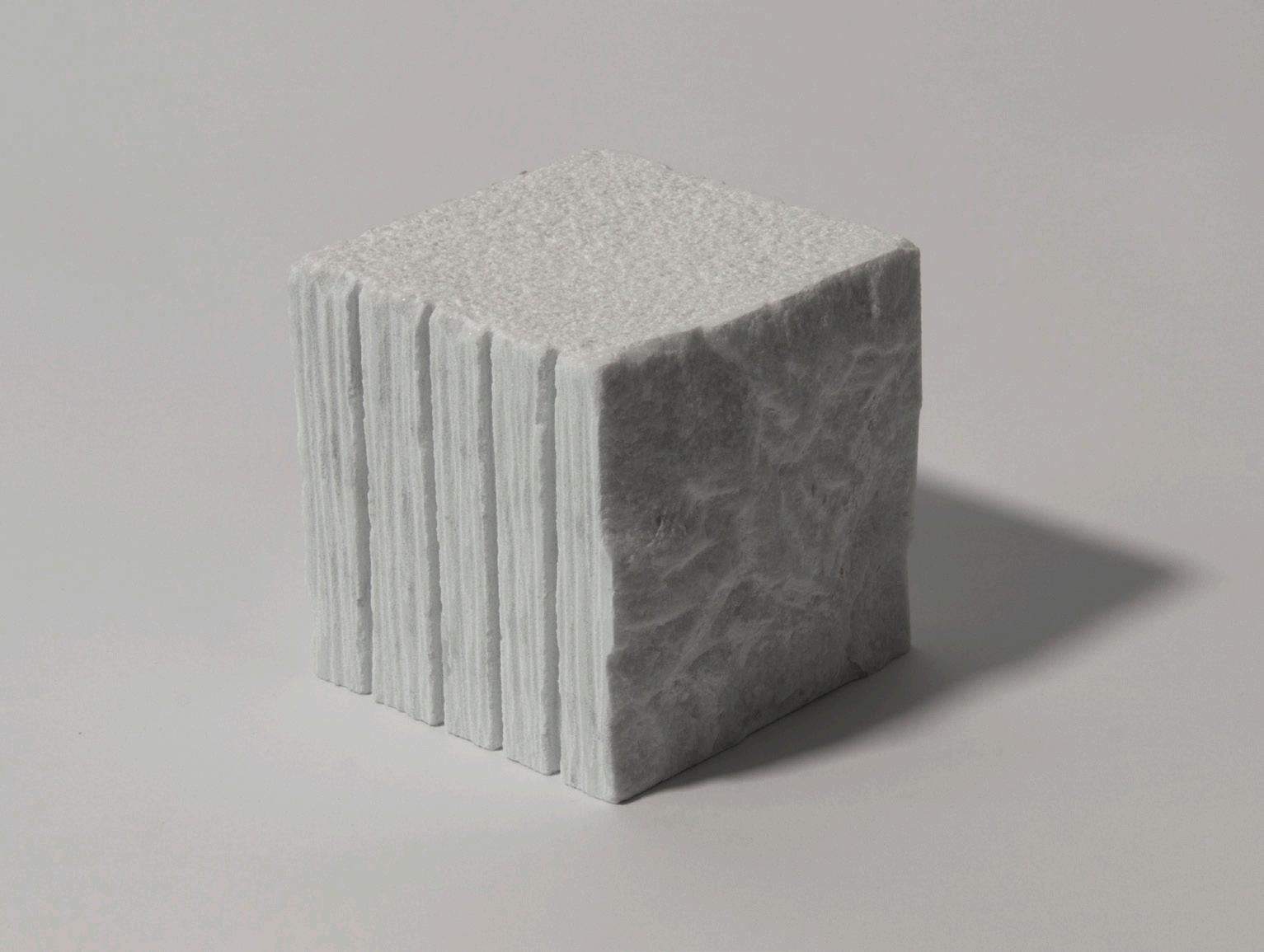
148
TEXTURE MARBLE CUBE
1:1


149 SECTION MODEL 1:10000


150
STAIR DETAIL MODEL
1:1


151
HANDRAIL DETAIL MODEL
1:1

152 TEST MODELS


153



154
MARBLE SCULPTURE WORKSHOP, CARRARA, 2020

155
OLD DRAWINGS


158

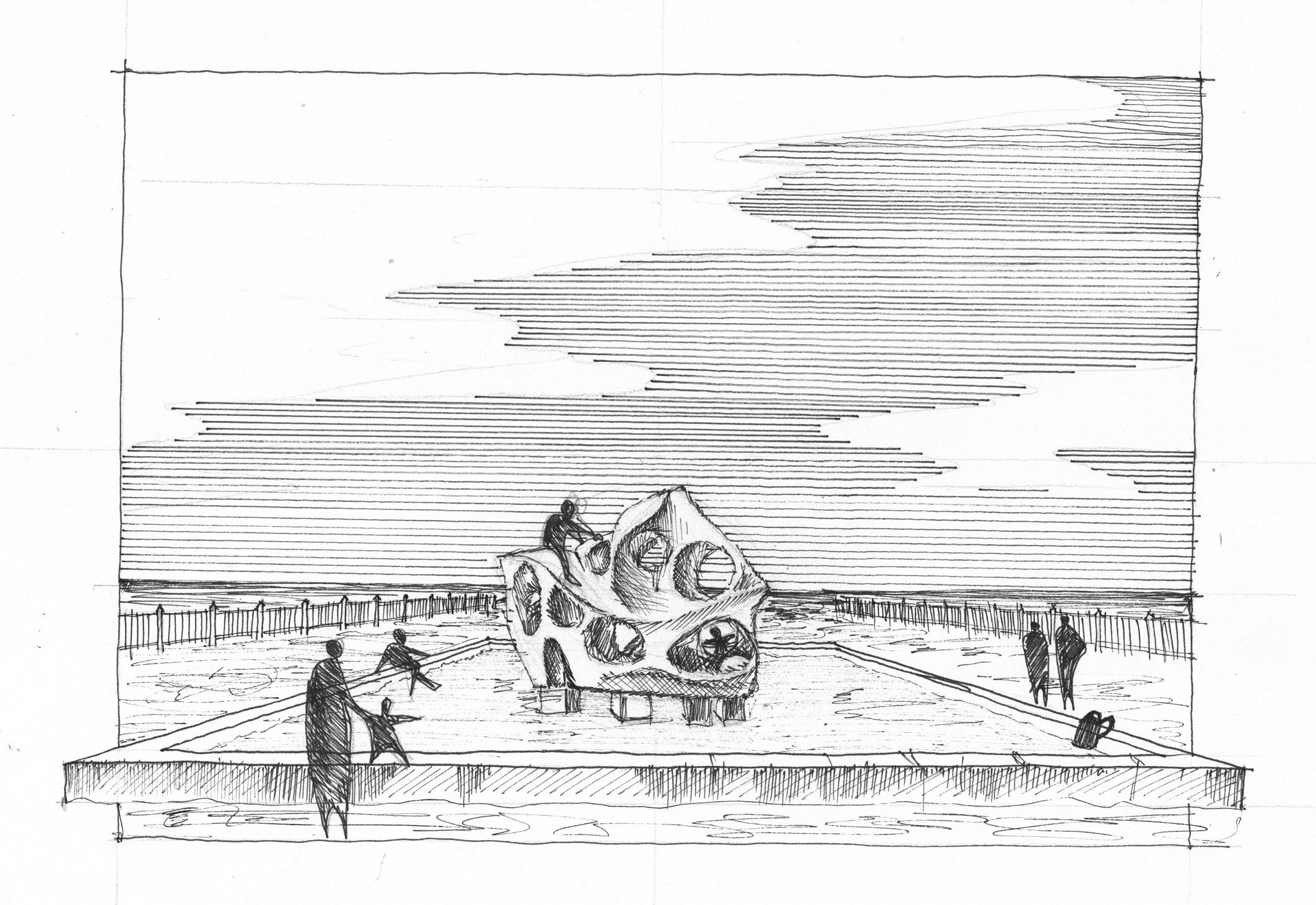
159


160


161
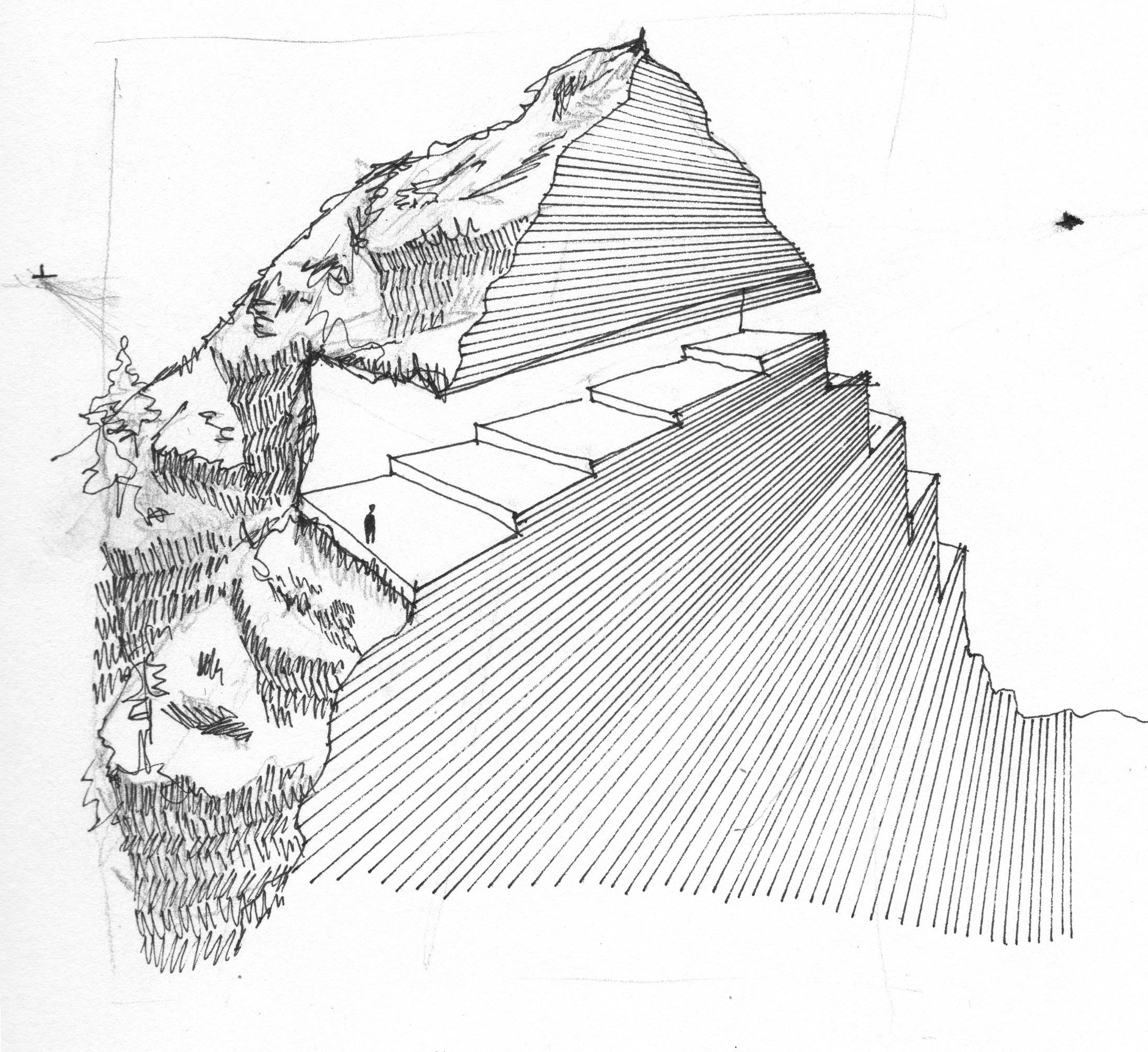
162
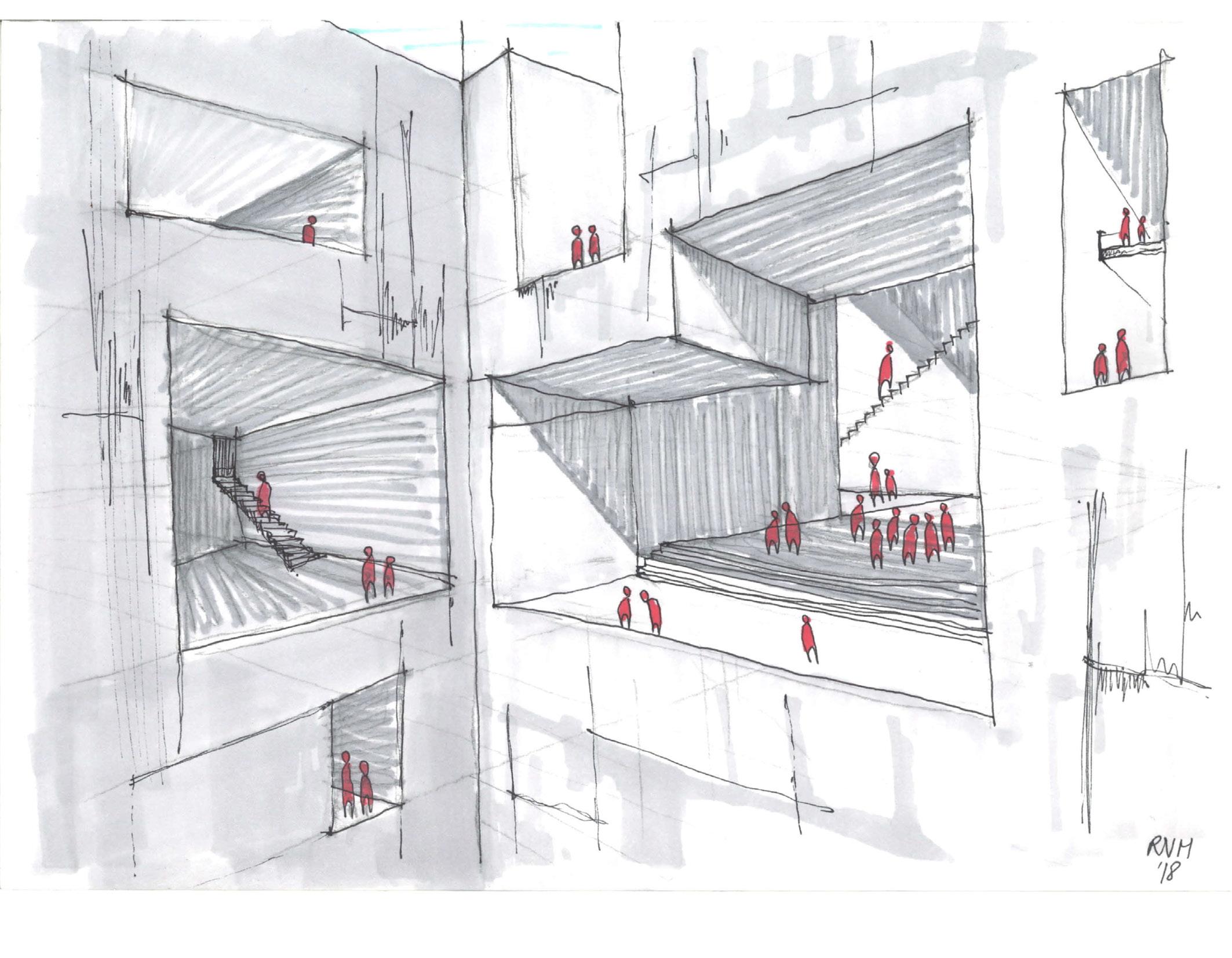

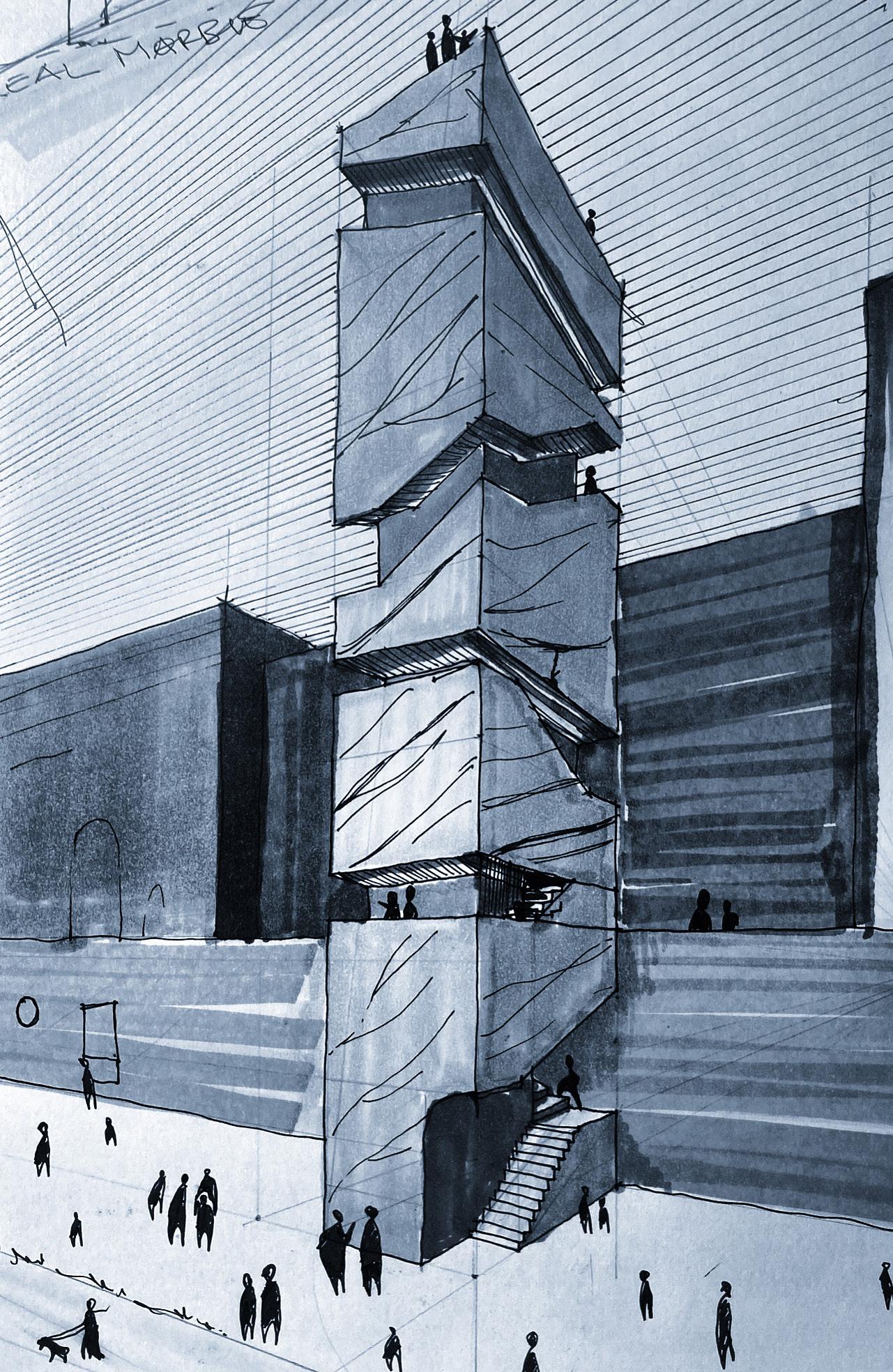
163
Bahamon A., Mineral Architecture, Parramon, 2010
Belanger P., Extraction Empire: Undermining the Systems, States, and Scales of Canada’s Global Resource Empire, The MIT Press, 2018
Bruni C., Carrara. Le città, le Alpi Apuane, le cave, Carrara, Società Editrice Apuana, 2020 - Carrara in cartolina, Carrara, Società Editrice Apuana, 2016 Dernie D., New Stone Architecture, Laurence King, 2003
Dolci E., Museo del Marmo - Carrara, Pontedera, Bandecchi & Vivaldi, 2006
Galofaro L., Artscape. L’arte come approccio al paesaggio con temporaneo, Milano, Postmedia, 2007
Giorgieri P., Carrara, Le città nella storia d’Italia, s.l., Laterza, 1992
Hall W., Stone, London, Phaidon, 2019
Machado R., Monolithic Architecture, Prestel, 1995
Milani G., La terra bianca. Marmo, chimica e altri disastri, Bari, Laterza, 2015
Rovelli M., Il contro in testa. Gente di marmo e d’anarchia, Bari, Laterza, 2012
Schultz A, Schultz B., Manual of Natural Stone. Modern usage of classic building material, Munich, Detail, 2020
BIBLIOGRAPHY
THANKS TO:
MAMAN
ANAHITA STEFANO RIMAAN ALEXANDER ALVARO NADIA CHIARA TIJANA NENE ROSARIO MORINO
Roxana Vakil Mozafari roxana.vakilmozafari@gmail.com www.linkedin.com/in/roxana-vakil-mozafari/






















































































































































